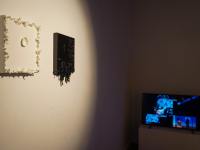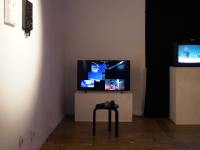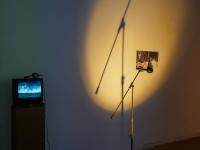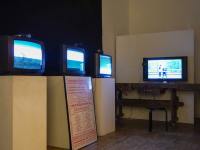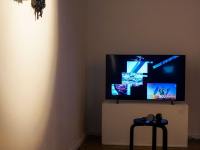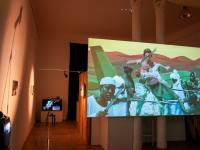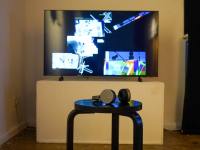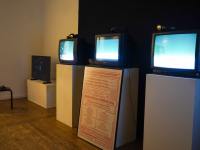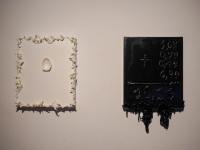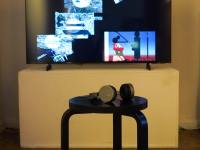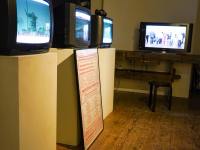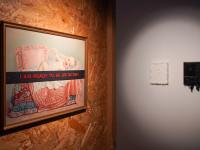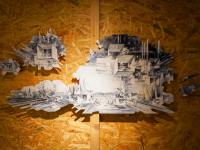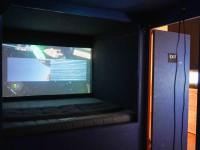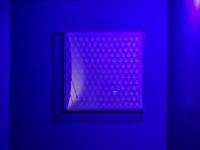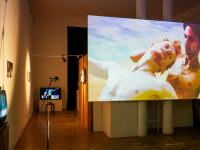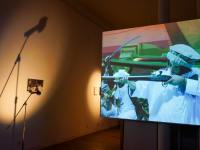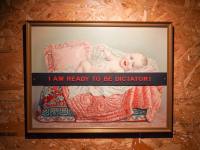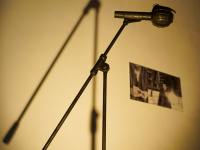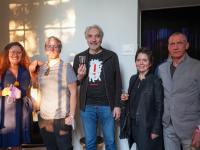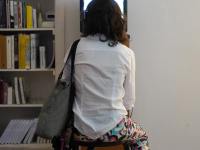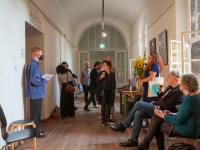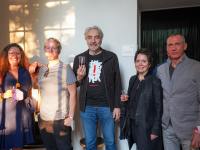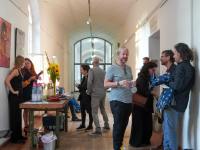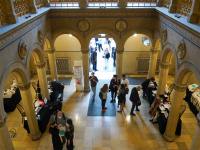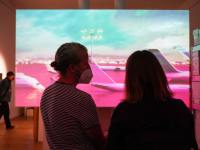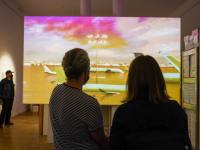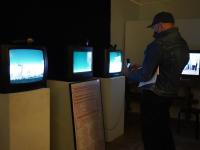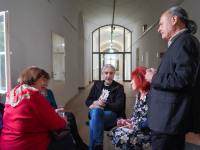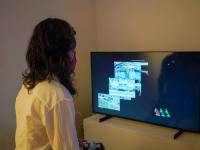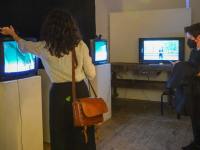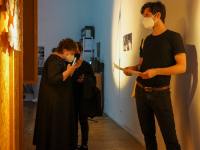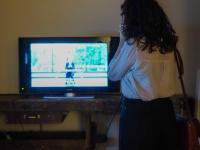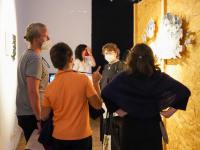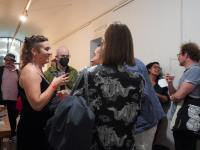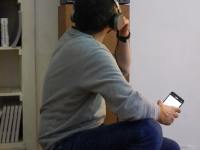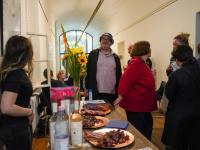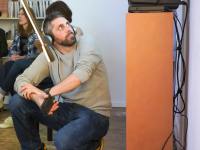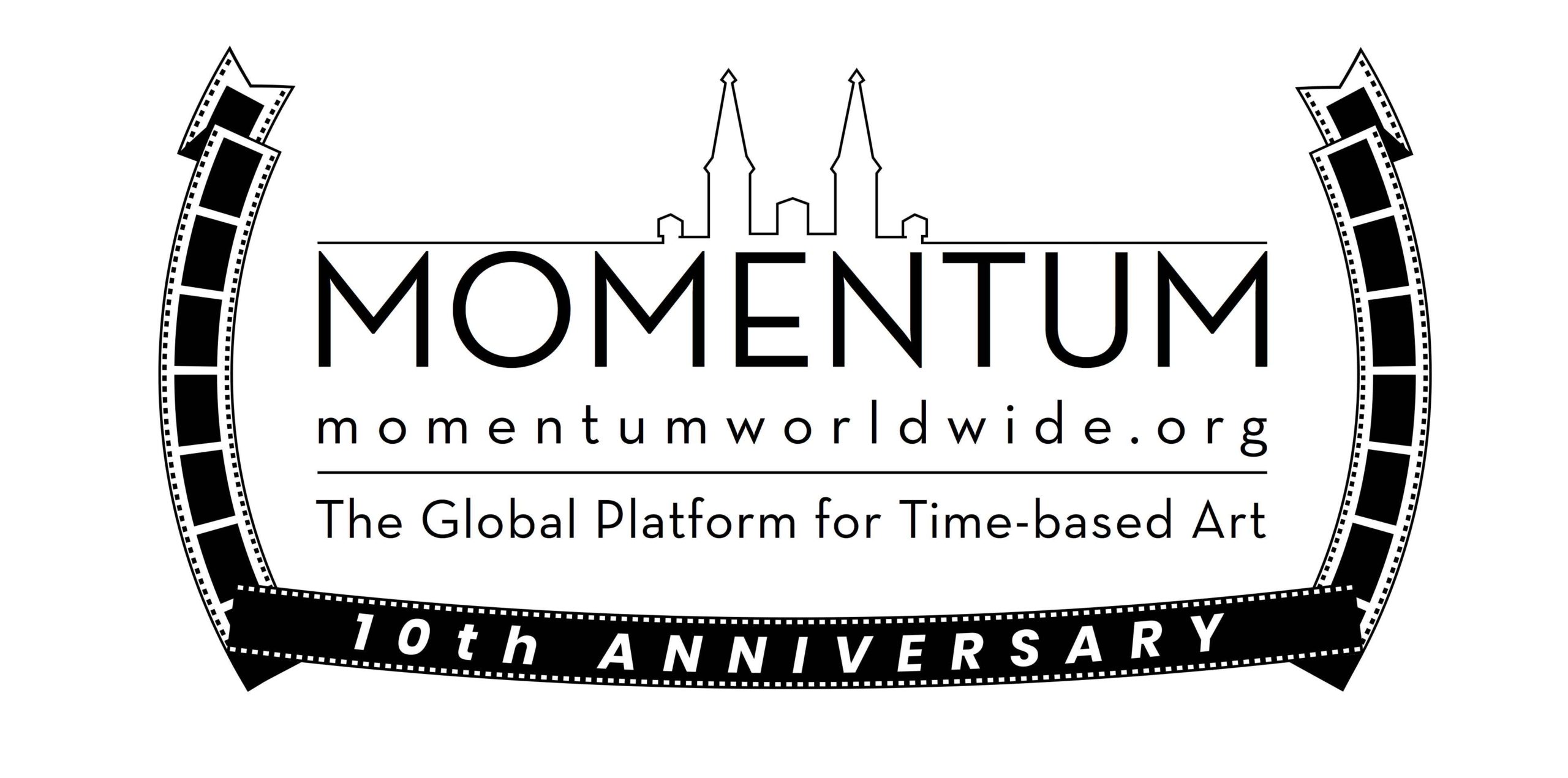
From Berlin Art Week through the 32nd Anniversary of the Fall of the Berlin Wall, MOMENTUM Presents:
TAKING FLIGHT
Birds & Bicycles Berlin
OPENING:
3 September @ 5 – 10pm
EXHIBITION:
4 September – 14 November 2021
WED – SUN @ 1 – 7pm
3G rules apply: proof of vaccination, recovery, or negative test required
@ MOMENTUM
Kunstquartier Bethanien
Mariannenplatz 2, 10997 Berlin, Germany
Featuring:
AES+F // Shaarbek Amankul // Inna Artemova // Marina Belikova //
Zuzanna Janin // Alexei Kostroma // Dominik Lejman // Almagul Menlibayeva //
Hajnal Nemeth // David Szauder // Mariana Vassileva // Vadim Zakharov
Curated by
Rachel Rits-Volloch & Emilio Rapanà
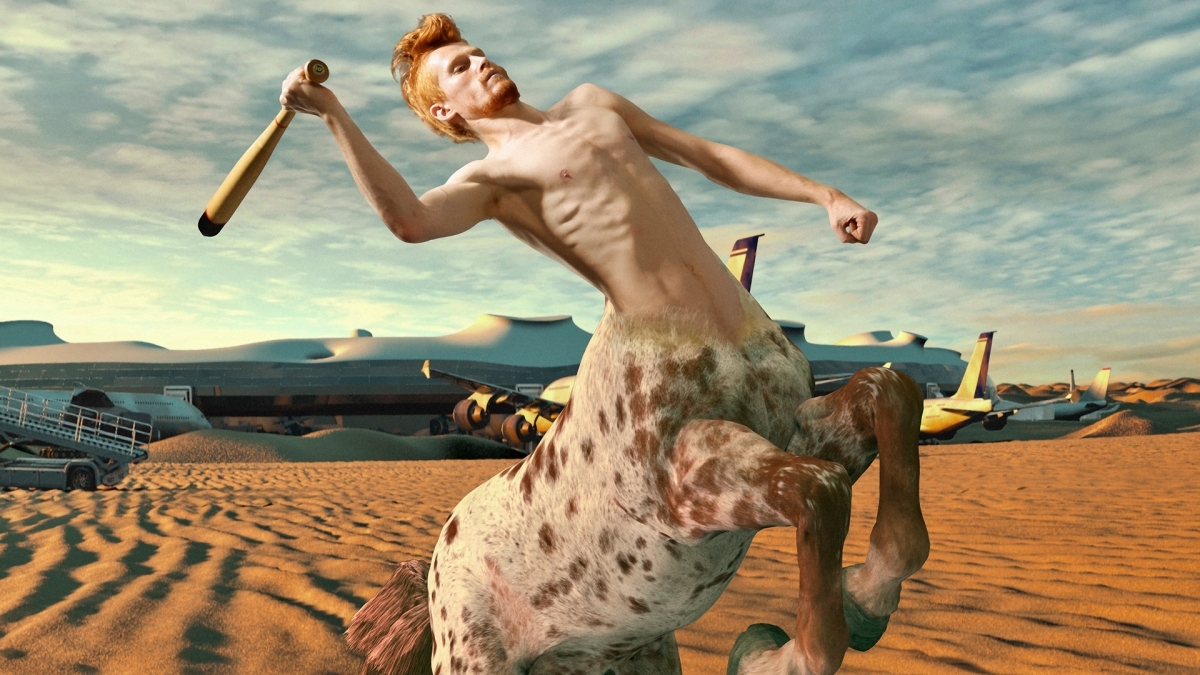
SYMPOSIUM:
9 November 2021 – the 32nd Anniversary of the Fall of the Berlin Wall
11:00 – 13:30 & 18:30 – 23:00
At Zionskirche, Zionskirchplatz, Berlin Mitte
Curated by
David Elliott & Constanze Kleiner
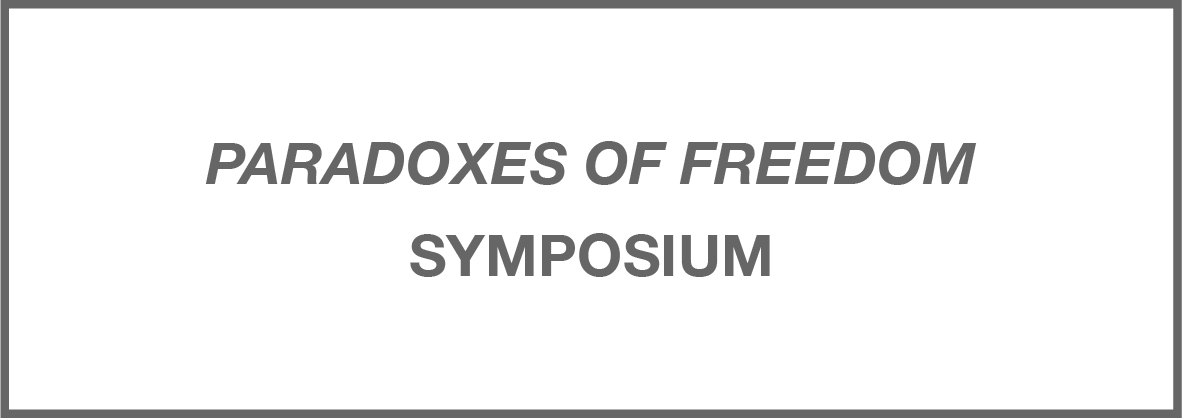
_______________________
ONLINE EXHIBITION ON

Video Art from TAKING FLIGHT: Birds & Bicycles Berlin
5 November – EXTENDED
Featuring:
AES+F // Shaarbek Amankul // Marina Belikova //
Zuzanna Janin // Dominik Lejman // Almagul Menlibayeva // Hajnal Nemeth // David Szauder
CLICK HERE to view TAKING FLIGHT: Birds & Bicycles on IkonoTV >>
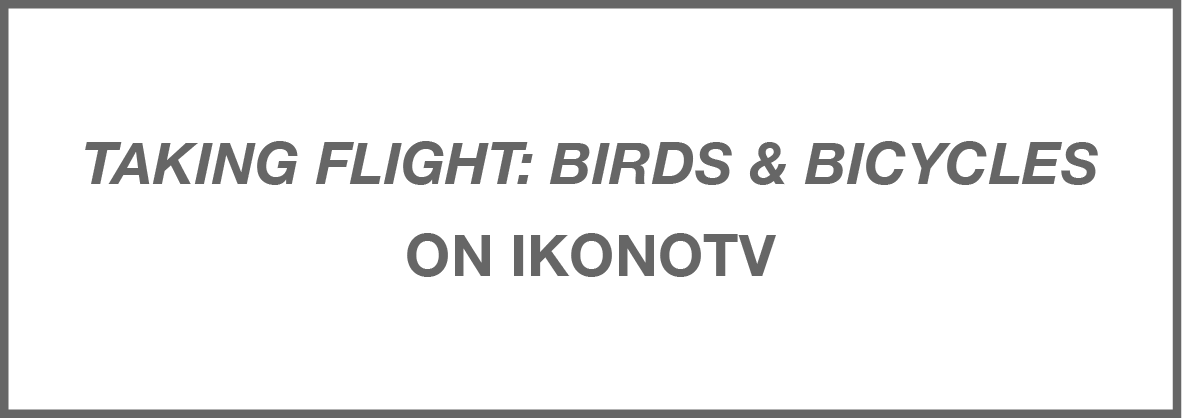
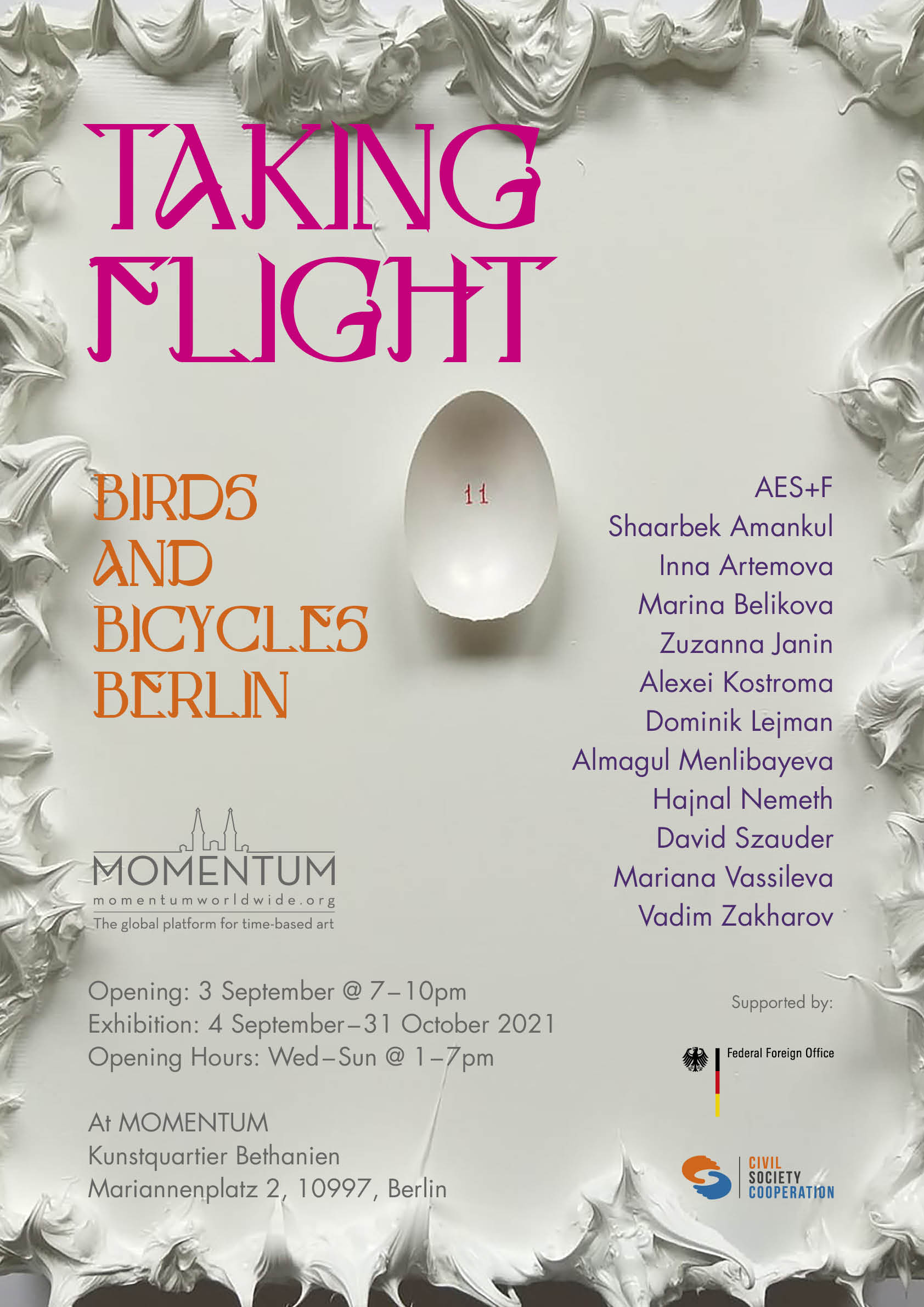
Together Birds & Bicycles
Initiated by Georgy Nikich & Anastasia Kamienska
An International Partnership Between 12 Institutions in Russia, Poland, and Germany
Together Birds & Bicycles is a platform initiated in 2021 as a cooperation between a dozen partners in Russia, Poland, and Germany, designed to address ideas of freedom and open boarders. Russia’s invasion of Ukraine in February of 2022 makes a travesty of these notions. Because there are so many in Russia who never supported this war, such a platform for freedom is needed now more than ever, if there is to be hope of a peaceful resolution.
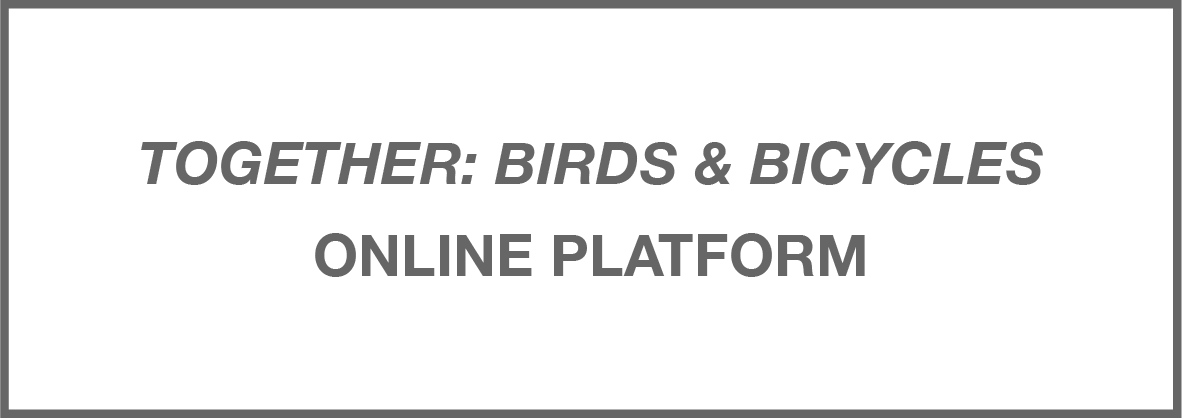
Supported by a grant from the
German Federal Foreign Office
for the Expansion of Cooperation with Civil Society
in the Eastern Partnership Countries and Russia
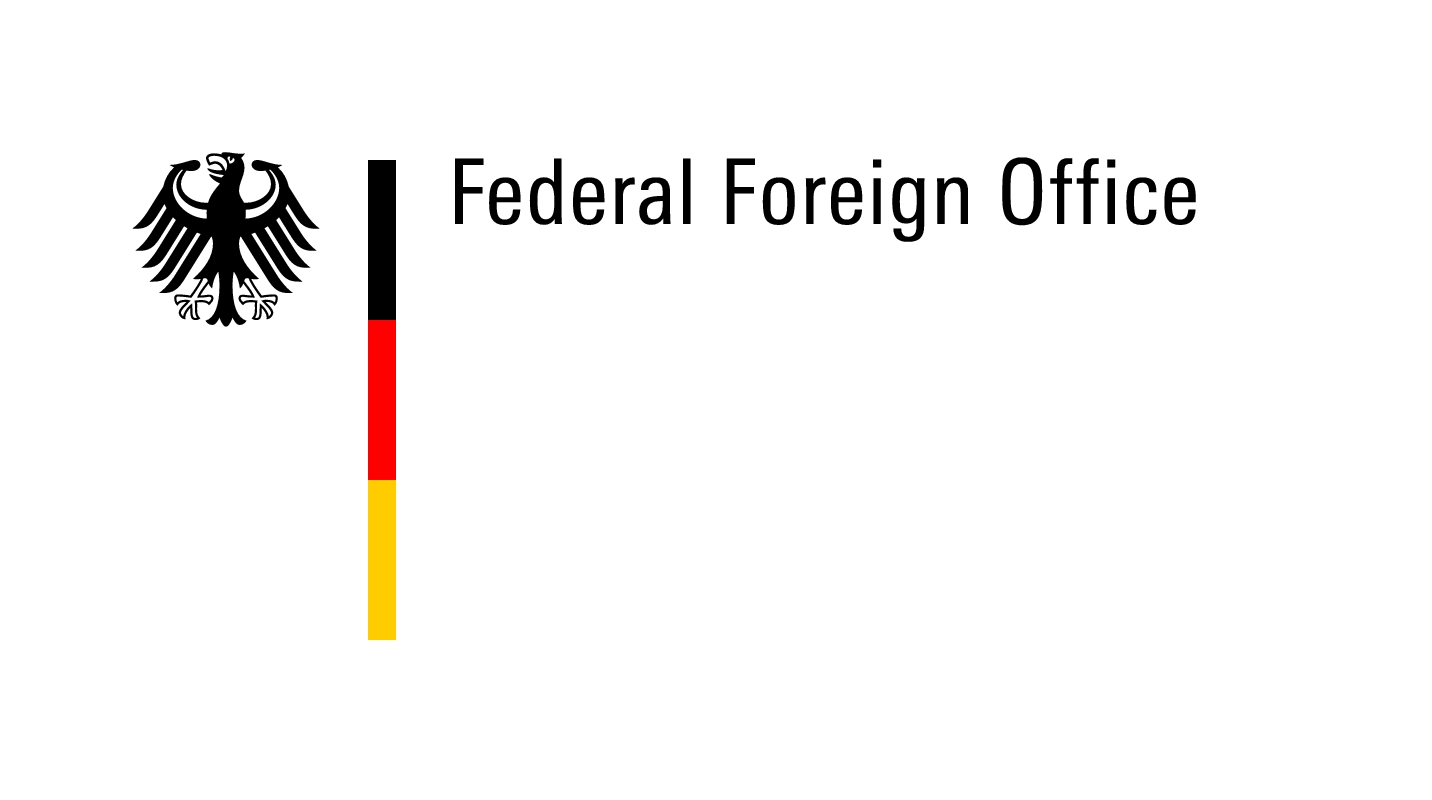 |
 |
In Partnership With:
ANO Center for Educational & Cultural Projects [Moscow, Russia] // Impact Hub [Moscow, Russia] // Exhibition & Discussion Center Khokhlovka Association, Ukraintsev Chamber [Moscow, Russia] // The Rails Cultural Center [Tver, Russia] // Vyhod Media Center [Petrozavodsk, Republic of Karelia, Russia] // Miras Gallery [Ufa, Republic of Bashkortostan, Russia] // The Renaissance Center for Polish Culture and Education [Ufa, Republic of Bashkortostan, Russia] // The Russian-Polish Center for Dialogue and Accord Foundation [Moscow, Russia] // BWA Krosno [Krosno, Poland] // City Culture Institute [Gdansk, Poland] // Arsenal Municipal Gallery [Poznań, Poland] // MOMENTUM [Berlin, Germany]

Birds & Bicycles is conceived as a ‘factory of metaphors’, taking as its premise the ideas of freedom and the notion of borders, forever shifting and perpetually being crossed, where bicycles symbolise physical freedom, and birds metaphysical freedom; birds become the philosophy of freedom, and bicycles the technology of freedom. The overall manifestation of Birds & Bicycles is an international cooperation between 12 partners in Russia, Poland, and Germany, each hosting their own exhibitions and discussions focused around common values symbolized by the topics of freedom and crossing of borders. Based on social activism, historical reflections, and contemporary art, the project develops an expanding framework of participatory culture, with the contributions of each international partner brought together in a single online platform sharing the social, educational, and communicative results of the Birds & Bicycles initiative.
In Berlin, MOMENTUM presents Birds & Bicycles with the exhibition and symposium TAKING FLIGHT. Extrapolating from the metaphor of birds and bicycles, we build our program around the analogy of flight. Referring to the duality of the term flight as both an airborne means of travel and an escape from crisis, the metaphor of flight is especially important in the historical and contemporary context of Berlin. From the aerial bombardment and destruction of Berlin in WWII resulting in reconstruction on-going to this day; to the Berlin Airlift during the Cold War, when for 15 months in 1948-49 American and British forces flew over Berlin more than 250,000 times to drop essential supplies to keep the population of West Berlin alive during the Soviet blockade; to the transformation of the Nazi-built Tempelhof Airport into Europe’s largest refugee camp in 2015 to house many thousands of migrants fleeing humanitarian crisis in their homelands to this day; to the Berlin Brandenburg Airport fiasco when, after a 10 year delay, seven missed opening dates, and over a billion euros over-budget, the German capital’s new airport finally opened in 2020 amidst pandemic travel restrictions. In a city itself long divided, located in the geographical center of a divided Europe, the history of air travel in Berlin is a history of crisis, indivisible from the basic humanitarian need for freedom. It is an account of flight in both its senses – as a form of travel and a means of escape across borders.
For the factory of metaphors which is Birds & Bicycles Berlin, TAKING FLIGHT assembles the work of 12 artists from Russia, Poland, Hungary, Bulgaria, Kazakhstan, and Kyrgyzstan, who are now Berliners. Representative of the significant cultural diaspora in Berlin from the former Eastern Bloc, the artists in this exhibition address the metaphor of flight as a symbol for freedom in various forms. While AES+F re-imagine the airport as a modern-day Purgatory, Almagul Menlibayeva gazes out at space as the next border we are racing to cross. Vadim Zakharov, too, looks out to the heavens to send a signal to the sun as the only way to travel beyond the borders closed to him. While David Szauder surrealistically re-animates his grandfather’s Super 8 footage from the Eastern Bloc of the 60’s-80’s, Shaarbek Amankul captures the historic moment of Lenin in flight, suspended between a past of failed ideologies, and an uncertain future. In a world of global humanitarian, ecological, and medical disaster, we may often feel as if we are in free-fall. Dominik Lejman’s skydivers undulating in the vastness of space come to resemble at one moment the geometric shapes of gothic church architecture, and in the next the biological forms of chromosomes; continually switching between the spiritual and the scientific origins of life. The birth – or persistent possibility – of a dictator is presented as Vadim Zakharov’s reminder that history is always on the verge of repeating itself. Hajnal Németh’s operatic rendition of quotations from failed leaders presents a sadly timeless portrait of an age when the irresponsibility and ignorance of leaders grows undiminished. Mariana Vassileva’s iconic microphone envisions the explosive power of the word through a subtly subverted symbol of power. While Inna Artemova’s exploded utopia is perhaps a reminder that any dream of a perfect society is by necessity build upon the ashes of its opposite. In his ongoing examinations of the unity of meanings in society and nature alike, Alexei Kostroma seems to be searching for a formula within nature to solve the many woes we inflict upon it. Zuzanna Janin’s boxing ballet is a work perpetually relevant in a time when we are all dancing around the issues. And the Russian exclamation balagan – describing, with celebratory gusto, a farce, a fine mess, the most unholy of cock-ups – is deployed by Marina Belikova to present a critical challenge to the chaos and misrule of our times.

(Click on the artist name to see the bio and the work description below)
AES+F
AES+F, Allegoria Sacra (2011-13), HD video
Giovanni Bellini’s ‘Allegoria Sacra’ (Sacred Allegory) hangs in the Uffizi in Florence. The subject of this painting is a mystery to art historians. The earliest figures of Christian and ancient mythology are gathered together on a balustrade by a sea or a wide river, surrounded by hills on which can be seen, in the distance, village huts and a palazzo. St. Sebastian, the Madonna, a centaur, small children playing by a tree in the center, a Saracen-Muslim, a man somewhat like the Apostle Paul with a sword in his hand, in the background a peasant with a mule, two beautiful ladies one of whom is St. Catherine, a naked old man reminiscent of Job – this is a far from complete list of the heroes who Bellini brought together in this picture. One interpretation of this painting is that it showed Purgatory, where the souls of the righteous, of virtuous pagans and of un-christened children await their fate – heaven or hell.
This painting has always intrigued AES+F. The mysterious image of the Allegoria Sacra is in keeping with their view of the modern world. They see Bellini’s heroes in those passengers who meet accidentally while awaiting their flights at international airports. The feelings of being cut off from one’s life and of the, as yet, unachieved aim of traveling from one world to another are familiar to the majority of those who fly, whether with large or small airlines. We become part of a special club of people who are united by the condition of a body and soul located between the abandoned and the not yet found. Together, i.e. simultaneously, we listen to the flight announcements, watch the flight board with its changing tableau of figures and cities, try to focus on the newspaper, on an SMS or the internet, or simply on the advertisements on the airport monitors. But everyone is wrapped up in themselves, and it is this which unites us. There is, perhaps, one more thing which somehow links us during this interval in time – we look at each other, having never seen one other before and being unlikely to do so again.
The airport is Purgatory. Only there does one understand that the knowledge of one’s ‘tomorrow’ is a total illusion. We imagine the airport as a space where reality transforms itself – it gets covered with snow, which alters the interior and then melts, the runway turns in to the river Styx as in Bellini’s painting, airplanes become ancient, mystic craft. The light-boxes in Duty Free live a life of their own, showing pictures of heaven. In Allegoria Sacra, we wish to retain Bellini’s metaphorical heroes using the image of modern-day people from various countries and cultures. At the same time we believe that the airport space can include such mythological personalities as the centaur, who we imagine in his literal embodiment. Or the Indian elephant god Ganesha, with the features of a coffee machine. Even the various aircraft may take on the image of ancient gods like the eastern dragon.
The allegorical heroes of the painting can be seen in those awaiting their flights. The Saracen turns into a group of transit passengers from Darfur or Peshawar. Sebastian is a young traveler from the exotic countries of the south, naked to the waist and barefoot, having not yet changed his shorts for jeans. Job is represented as an elderly patient being transported on a hi-tech stretcher and covered with tubes, indicators and monitors, who becomes younger before our very eyes and turns into a magical mutant-baby. A policeman of Biblical appearance carries a sword alongside the more traditional equipment, like Paul. The stewardesses, angels from a new heaven, appear on fantastic flying machines like the cabin crew in Stanley Kubrick’s film 2001: A Space Odyssey, and start to serve passengers.
The film follows in part the reality of airport life. As well as experiencing the usual crowds of passengers we witness the location and destruction of an unidentified piece of luggage, a fight between migrants, the emergency services helping a patient. Alongside everyday reality we see a whole range of mystical transformations of this world, from a jungle with exotic tribes to an underwater kingdom, then to a snow field which melts to form the river Styx, flowing to the horizon in to an endless sea in the direction which the passengers will eventually fly, their planes becoming mystical craft.
[Artist Statement]
Seen in light of the recent pandemic lockdowns and restrictions on travel we have all faced, the metaphor of the airport recast as Purgatory takes on a depth of meaning relevant to all of us for whom freedom of travel and mobility has until now been a given.
AES+F (Artist Group founded in 1987. Live and work in Berlin, Germany; Moscow, Russia; New York, USA.)
First formed as AES Group in 1987 by Tatiana Arzamasova, Lev Evzovich, and Evgeny Svyatsky, the collective became AES+F when Vladimir Fridkes joined in 1995. AES+F work at the intersection of traditional media, photography, video and digital technologies. They define their practice as a kind of “social psychoanalysis” through which they reveal and explore the values, vices and conflicts of contemporary global culture. In 2015, AES+F premiered Inverso Mundus at the 56th Biennale di Venezia, and later showed it at the Kochi-Muziris Biennial and a number of other museums and festivals around the world. AES+F achieved worldwide acclaim in the Russian Pavilion at the 52nd Biennale di Venezia in 2007, and since then have participated in many signature biennials around the world, including: Adelaide, Gwangju, Havana, Helsinki, Istanbul, Kiev, Kochi-Muziris, Lille, Lyon, Melbourne, Moscow, St. Moritz, Sydney, Taipei, Vancouver, and others. Festivals devoted to new media include: ARS Electronica (Linz), Mediacity Seoul and Video Zone (Tel Aviv). AES+F had over 100 solo exhibitions at museums and galleries worldwide, including: ZKM (Karlsruhe), HAM (Helsinki), Moderna Museet (Stockholm), Tate Britain (London), MAXXI and MACRO Future (Rome), Centre Pompidou (Paris), Museo Thyssen-Bornemisza (Madrid), Today Art Museum (Beijing), Mori Art Museum (Tokyo), Leeum Samsung Museum of Art (Seoul), State Russian Museum (St. Petersburg), Garage Museum of Contemporary Art (Moscow), National Gallery of Australia (Canberra), Faena Art Center (Buenos Aires), and many others.
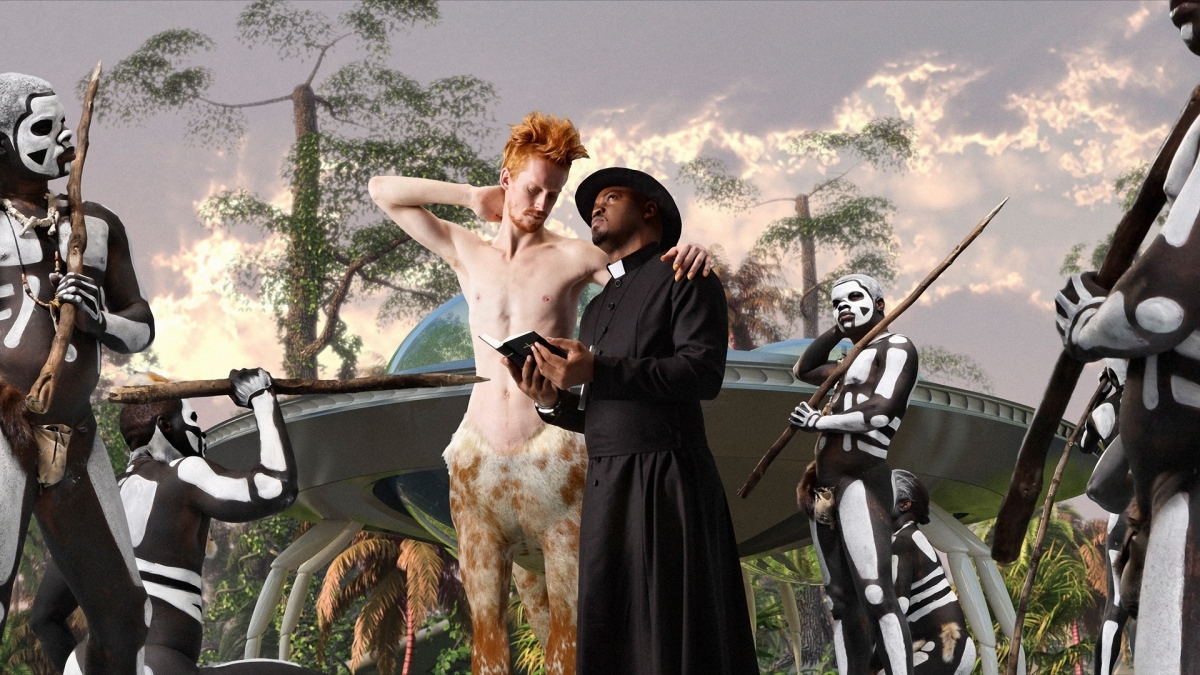
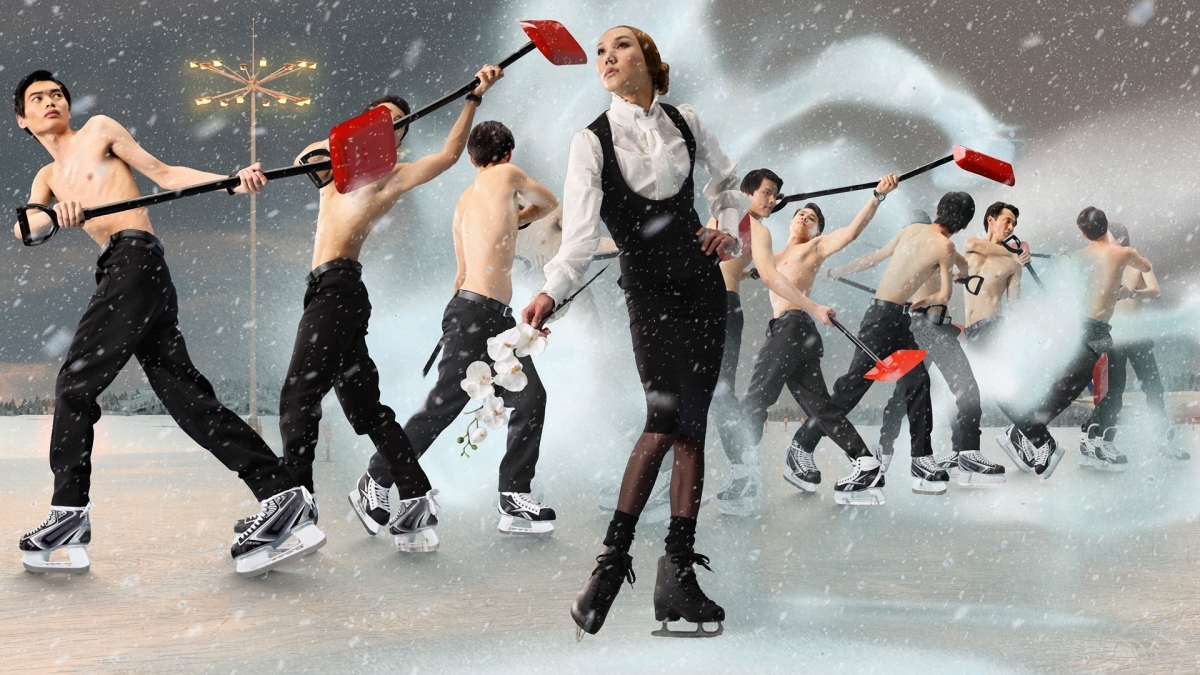
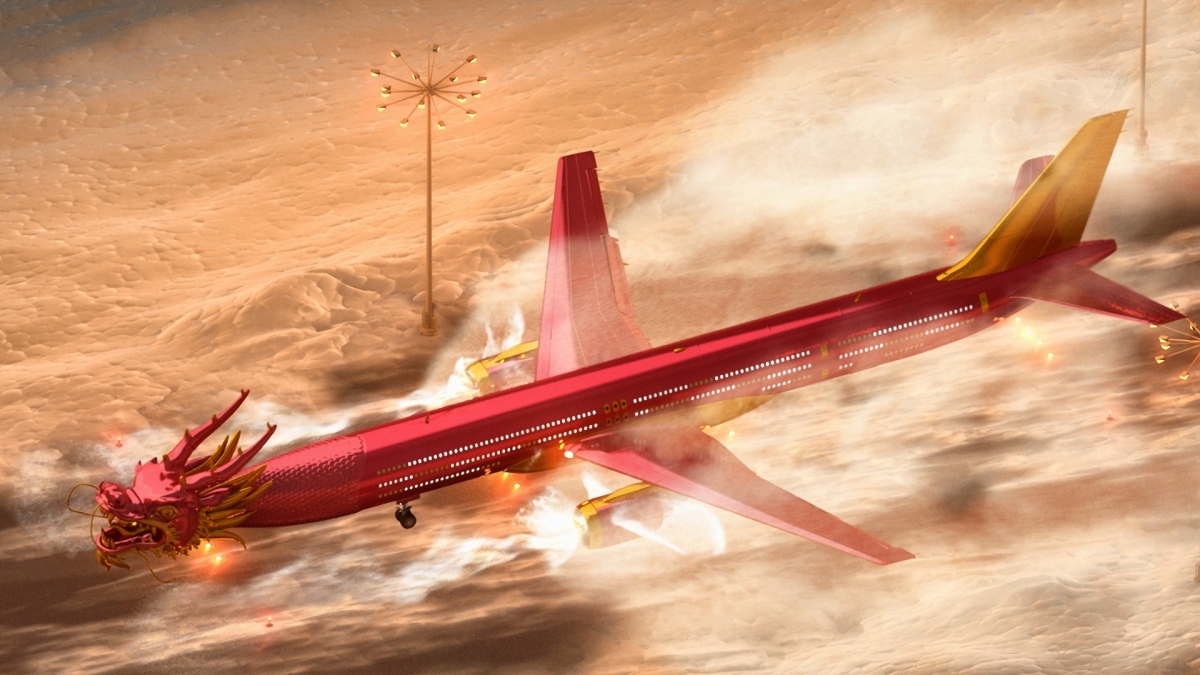
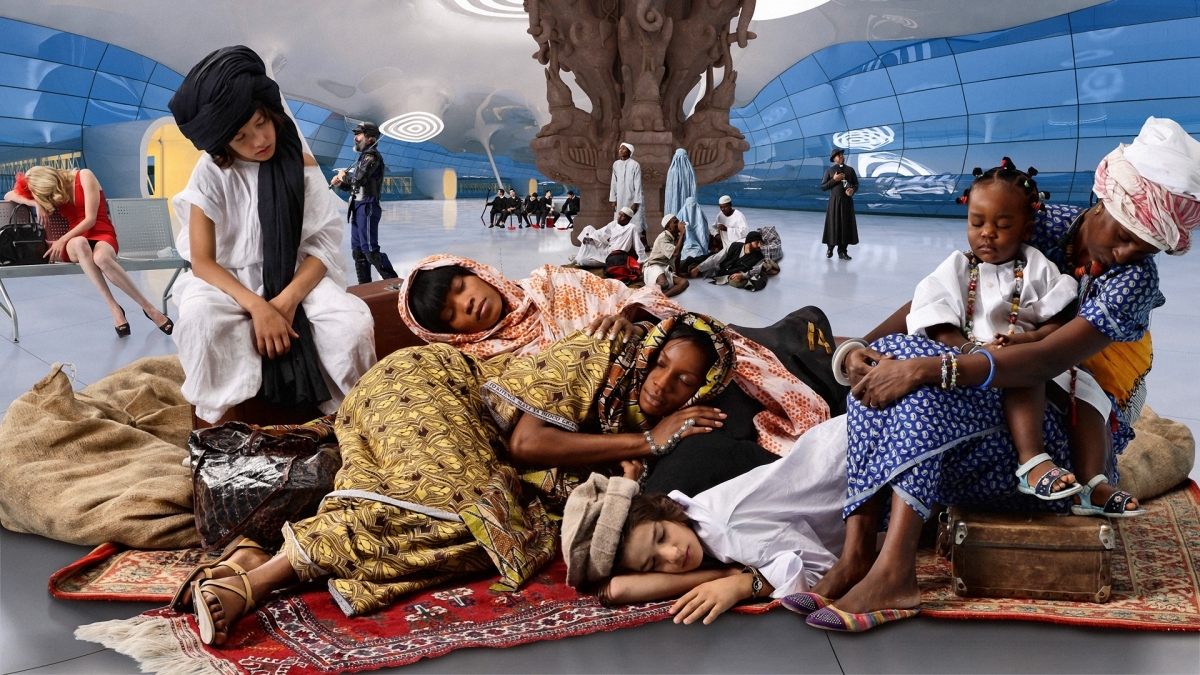
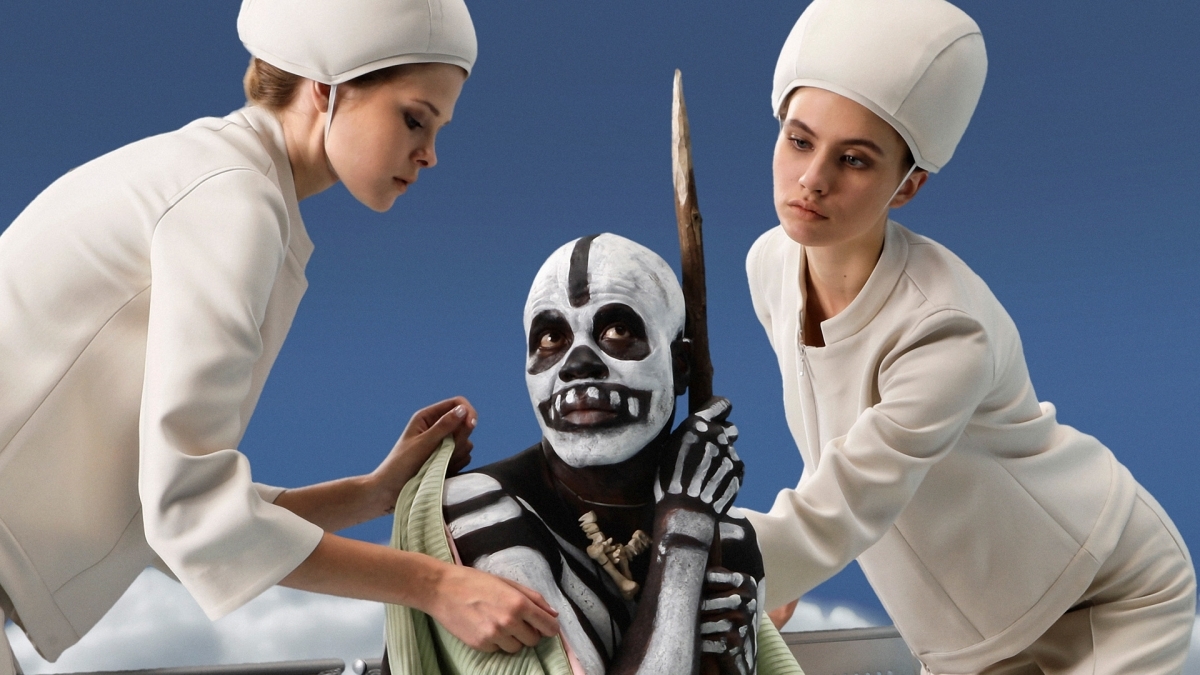
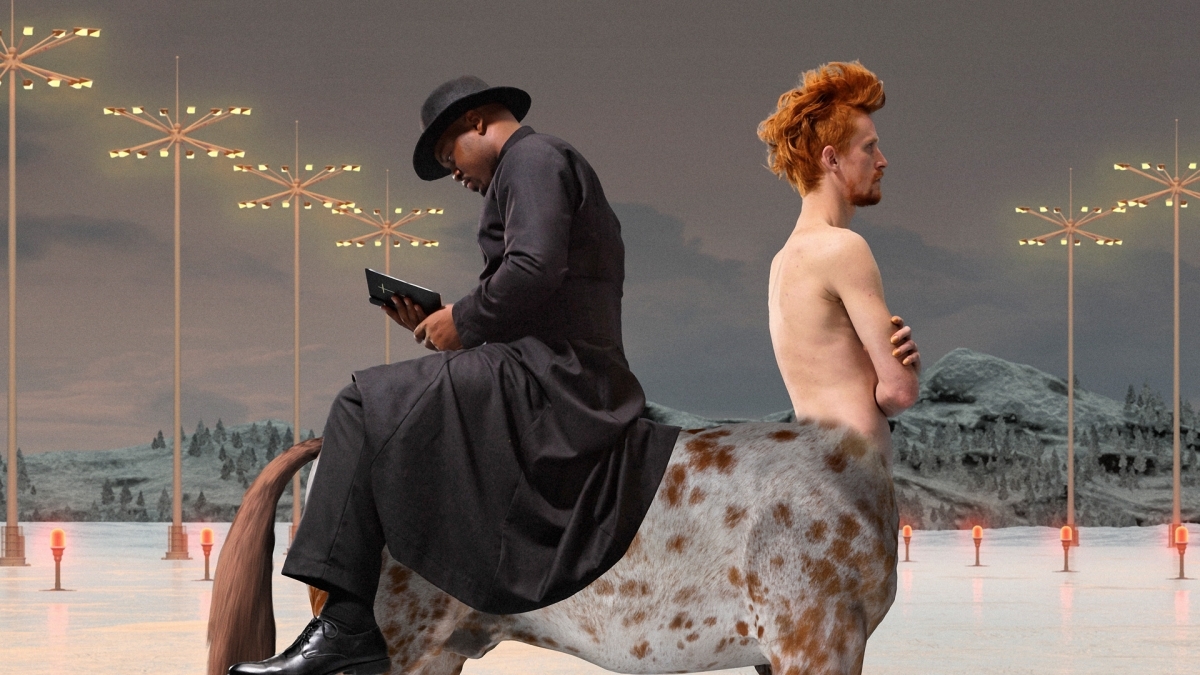
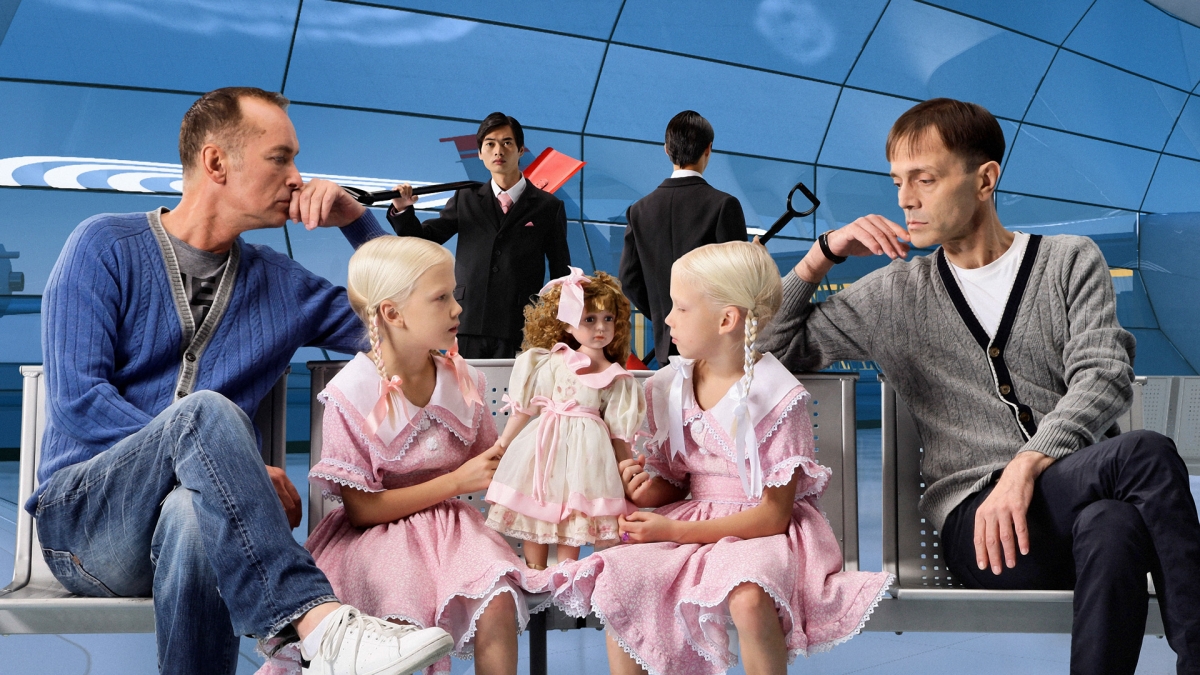
Shaarbek Amankul
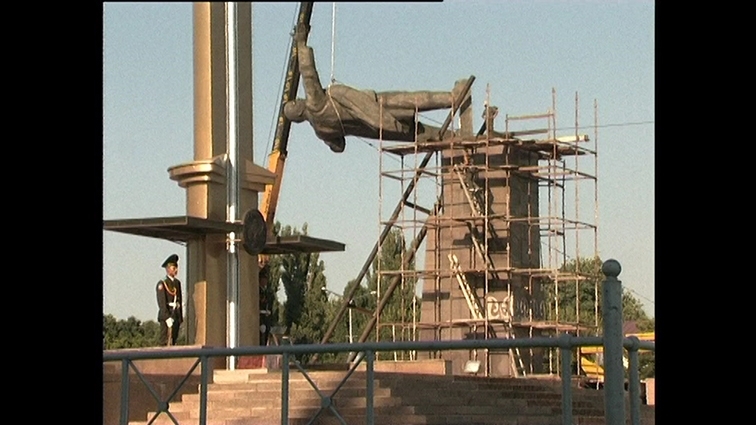
Shaarbek Amankul, Lenin Stands – Lenin Fell Down (2003), video, 1’30″
With the advent of Communism in Kyrgyzstan, pre-Soviet ways of life were transformed as nomads became fighters for an international revolution, farmers became citizens, and Muslims became atheists. In the central square of Kyrgyzstan’s capital, Bishkek, Lenin’s sculpture proudly stood from 1982 to 2003. In an almost comic case of cultural confusion, even after gaining their independence, masses of former communists came to pray beneath this statue; the worship of Communist ideology giving way to the mass prayers of Ramadan. Lenin towered above this square until 2003, when he was brought down from the facade of the Historical Museum (the Museum of Revolution until 1992), and moved to its backyard. This procedure, though oddly ceremonial, was not advertised by local authorities. This work captures a rare historic moment – Lenin in flight, suspended between a past of failed ideologies, and an uncertain future. The ceremony of the changing of the guard – so appropriate to this notable event – is ironically incidental to it, taking place every day at this location, and clearly oblivious to Lenin’s historic flight.
Shaarbek Amankul (b. 1959 in Bishkek, Kyrgyzstan. Lives and works in Bishkek.)
Shaarbek Amankul is a curator and interdisciplinary artist working with a variety of media: ceramics, sculpture, installation, performance, video and photography, in addition to conceptual research projects. Amankul holds art and history degrees from Frunze Art College, Bishkek, Kyrgyzstan (1980) and Kyrgyz National University (1989), respectively. Amankul founded the international artist group Art Connection (2001-2006), the first art initiative in Kyrgyzstan focused on environmental issues. Amankul’s conceptual and curatorial work also includes the extensive art platform B’Art Contemporary, which he founded in 2007 to instigate a critical arts dialogue between the communities of Central Asia and the global art world.
B’Art Contemporary, amongst the very first contemporary art initiatives in Kyrgyzstan, is an artistic research platform which considers art as an essential facilitator of critical dialogue on environmental, social, economic and cultural issues faced by the societies of Central Asia. To continue his mobile art practice and artistic research, in 2011 Shaarbek Amankul founded the Nomadic Art Camp, an series of nomadic art projects in Kyrgyzstan, using the practice of the traditional way of life of nomads as a source of inspiration for contemporary art practices. The project, continuing to this day, focuses on the relationship between art and the political, economic and social processes at the intersection of issues of globalization, migration and bio-cultural diversity.
Inna Artemova
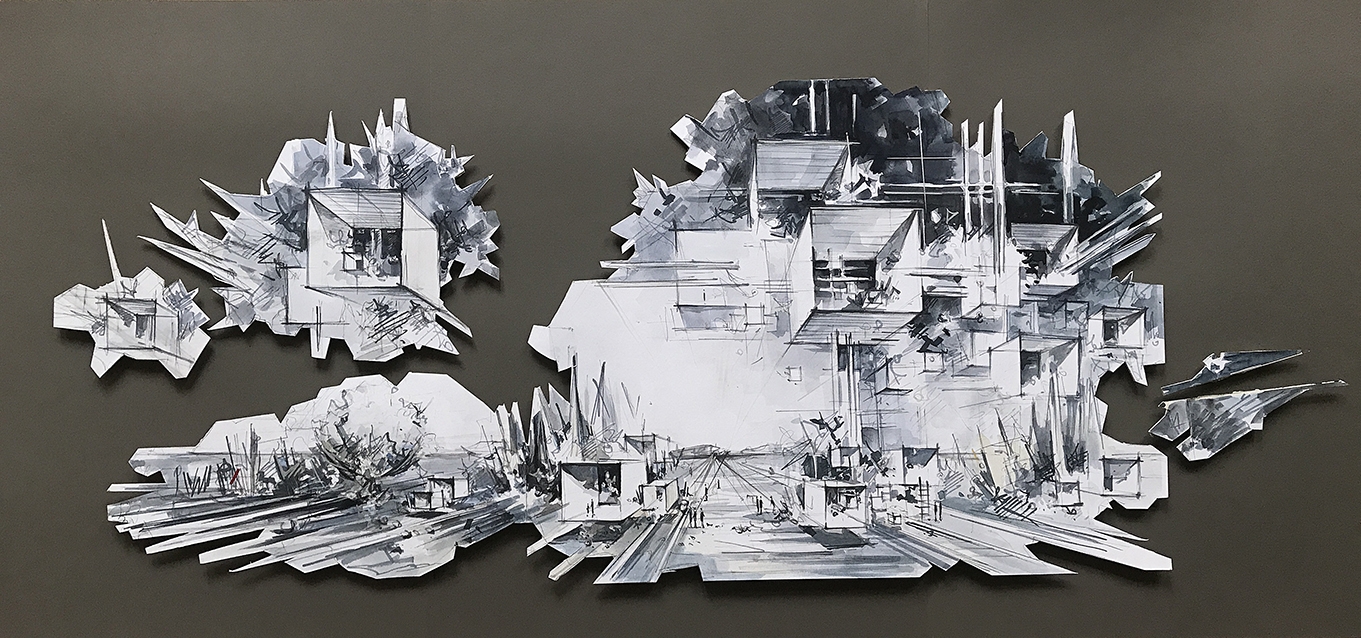
Inna Artemova, Utopia 8-151 (2021), ink, marker, paper on cardboard, 50 x 125 cm
Escaping the borders of the 2-dimensional work on paper or canvas, this installation embodies Artemova’s focus on architectures of utopia. Yet while the idea of utopia is the dream of a perfect society, this work evokes a sense of impending cataclysm, as yet quite far removed from an idealized state of perfection. Seeming to capture the aftermath of some volatile force, this exploded and explosive installation sends a suitably ambiguous message about the future and the present. The sense of velocity in Artemova’s works gives her floating structures a futuristic speed, propelling them – as the title suggests – into a more perfect future. Contriving to comingle a notion of existential threat with the sense of the sublime, Utopia 8-151 can be seen as portrait of our precarious times. Having witnessed first-hand the collapse of the Communist utopia in her native Soviet Union, Artemova’s utopias are fragile constructivist visions in a state of constant flux; exploding, imploding, teetering on the edge of a perilous balance, or perhaps already being rebuilt. Every collapse presents the hope of a new beginning; a renewed dream of an ideal future. Utopias are too often built on the ashes of their opposites.
Inna Artemova (b. Moscow, USSR. Lives and works in Berlin, Germany.)
Born in Moscow, Inna Artemova studied architecture at the Moscow Architectural Institute (MArchI). For her diploma project, she received the 2nd prize of the Russian Federation. In 1998 she moved to Berlin and started to focus on her work as an artist in the field of painting and drawing. Artemova’s practice remains heavily influenced by her professors at the MArchI in Moscow, the “Paper Architects“, a movement originating in the 1980s that developed futuristic architectural creations never intended to be realized. The visionary projects of the Paper Architects and her experience of the failure of the Communist utopia with the fall of the Soviet Union, has led Artemova to explore, through her constructivist painting style, the ideas of architectural utopias from the 1960s up to her own futuristic visions. In creating utopian landscapes and spaces, Artemova interrogates the future of living spaces and their impact upon human relationships. The concept of utopia stands for a space of possibility in human consciousness in which the crucial questions have to be answered again and again: Is there no alternative to the reality in which we live? What will we do in the future? Do we have to fail because of our ideal ideas?
Marina Belikova
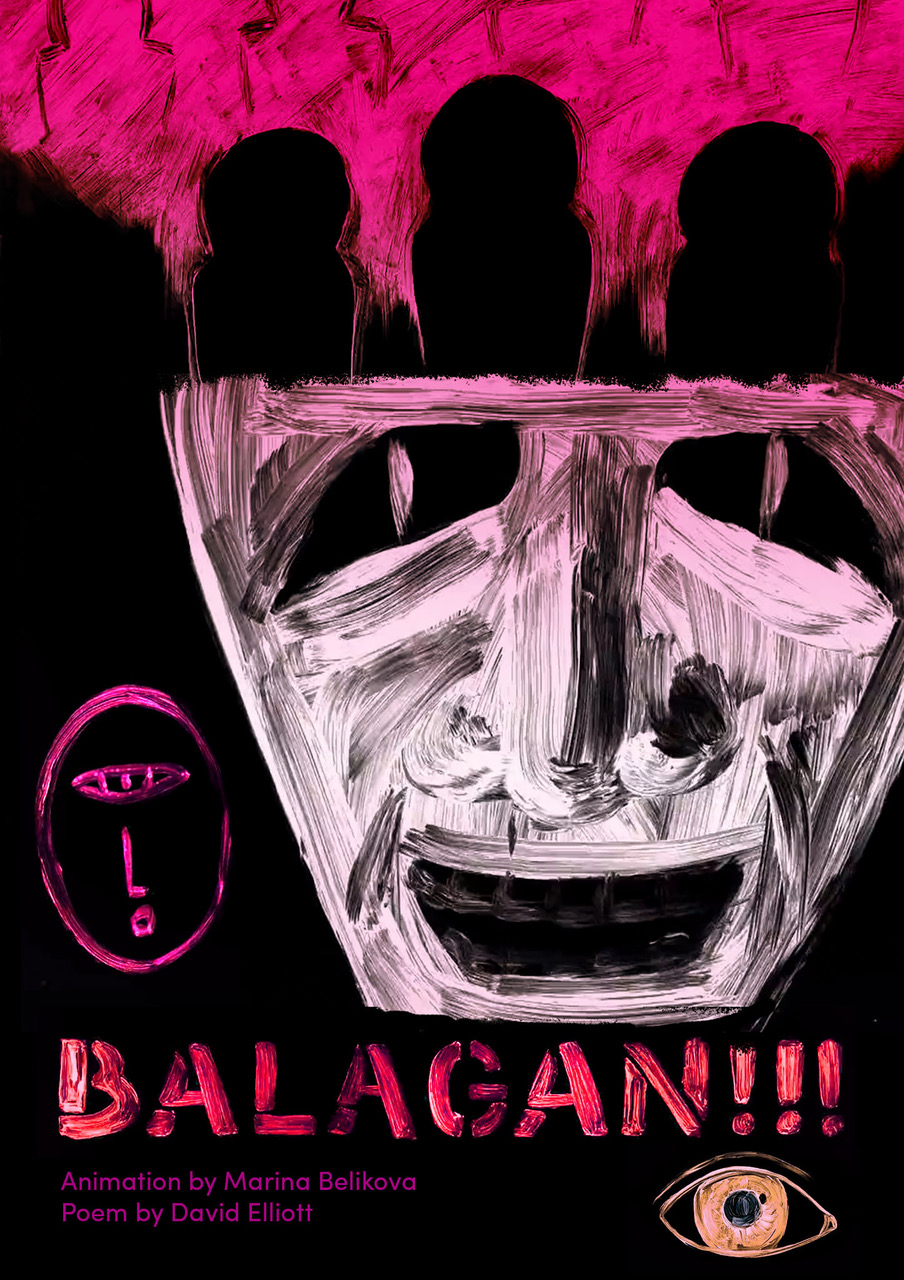
Marina Belikova, BALAGAN!!! (2015), video animation, 1’47”
In Russia balagan is a popular exclamation that describes, with celebratory gusto, a farce, a fine mess, the most unholy of cock-ups. BALAGAN!!! is also a major international exhibition produced by MOMENTUM in 2015 of contemporary art from the former USSR and Eastern Bloc that reveals a world where chaos and misrule, along with the social comedy that results from it, are celebrated and scathingly exposed. Balagan originally meant ‘fairground’. By the 18th century it had become associated with the activities of the people who worked in them: puppeteers, clowns and jesters, who made fun of and satirised established order. And, from the beginning, artists have realised the potential of balagan as an effective framework for revealing the truth. Today, the revolutionary politics of laughter, as well as the cathartic release it promises, are engendered by a sense of outrage at cruelty, inhumanity and the abuse of human rights. But balagan is not only modern: ever since time began, chaos has been ever-present. The exhibition BALAGAN!!! Contemporary Art from the Former Soviet Union and Other Mythical Places is about how some artists choose to depict the chaos of our times critically, challenging its power through humour, parody and the power of art itself. For this exhibition, the curator David Elliott wrote his own unique description of BALAGAN, which Jonathan Barnbrook designed, and Marina Belikova visualized as an animated film. We reprise BALAGAN!!! for Birds & Bicycles, as it remains equally relevant to our world today, still afflicted by chaos and misrule, and now also a global pandemic to contend with. Perhaps the power of humour, parody, and art itself lies in its ability to lift us out of the darkness and, soaring above it, develop new perspectives and better hopes.
Marina Belikova (b. in Moscow, Russia. Lives and works in Berlin.)
Marina Belikova is a Berlin based media artist, working with photography, graphic design and 2D animation. She has a background in web and media design. In 2012-2013 she did an M.A. in Communication Design in Kingston University London and in 2016 she graduated from Bauhaus University Weimar with an M.A. in Media Art and Design, making “The astronaut’s journal” as her master thesis. Belikova tells narratives through the old school oil on glass animation technique, where each frame is painted individually and then captured with a camera as stop motion animation. She also works with photography and mixed media, exploring the topics of human memories and interaction between people and urban spaces. Her animation have been screened at multiple film festivals in more than 10 countries and her photo series have received the Bauhaus Essentials Prize and have been shown various exhibitions.
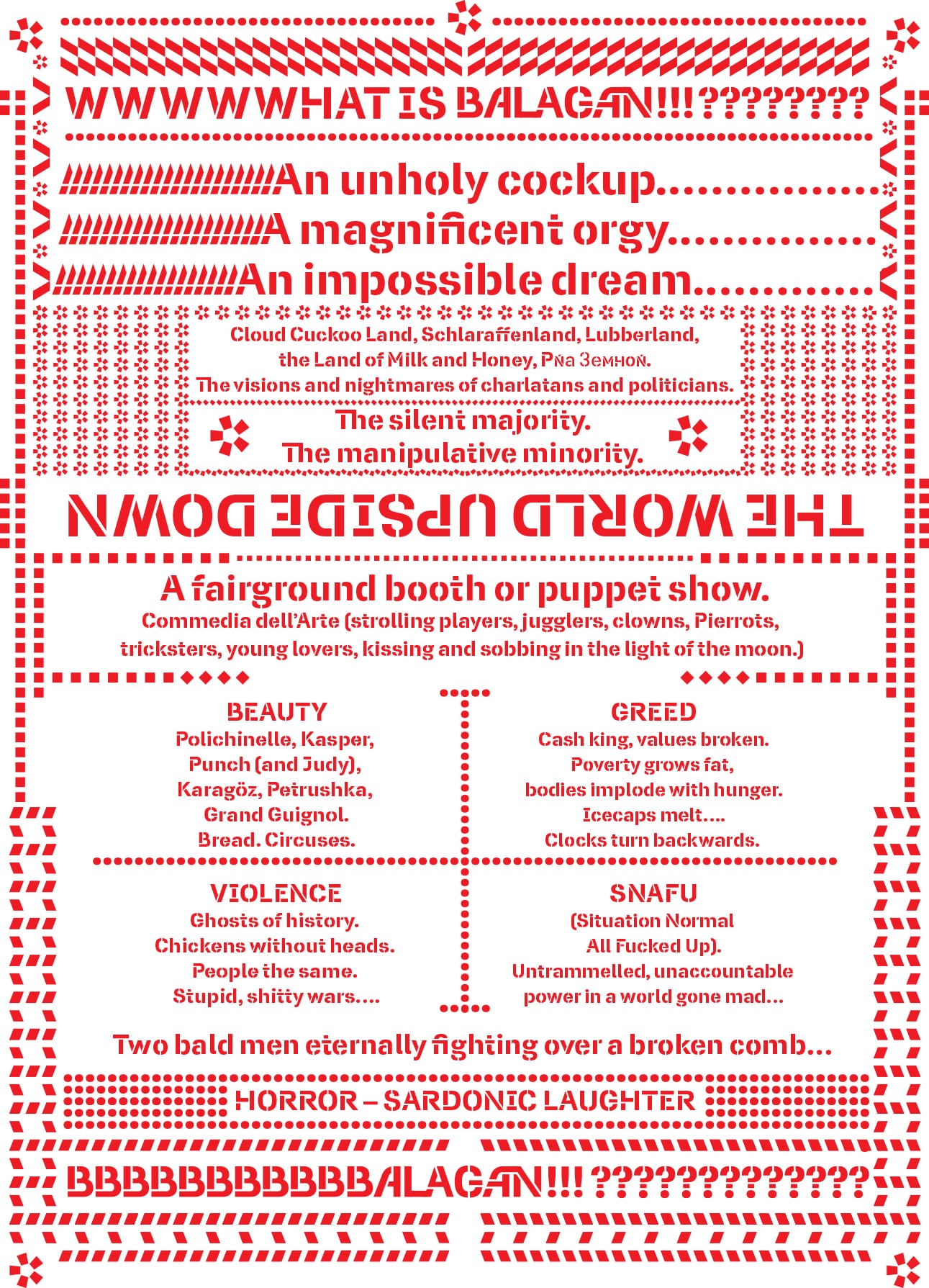
David Elliott (text) & Jonathan Barnbrook (graphics), BALAGAN!!! (2015), print on paper
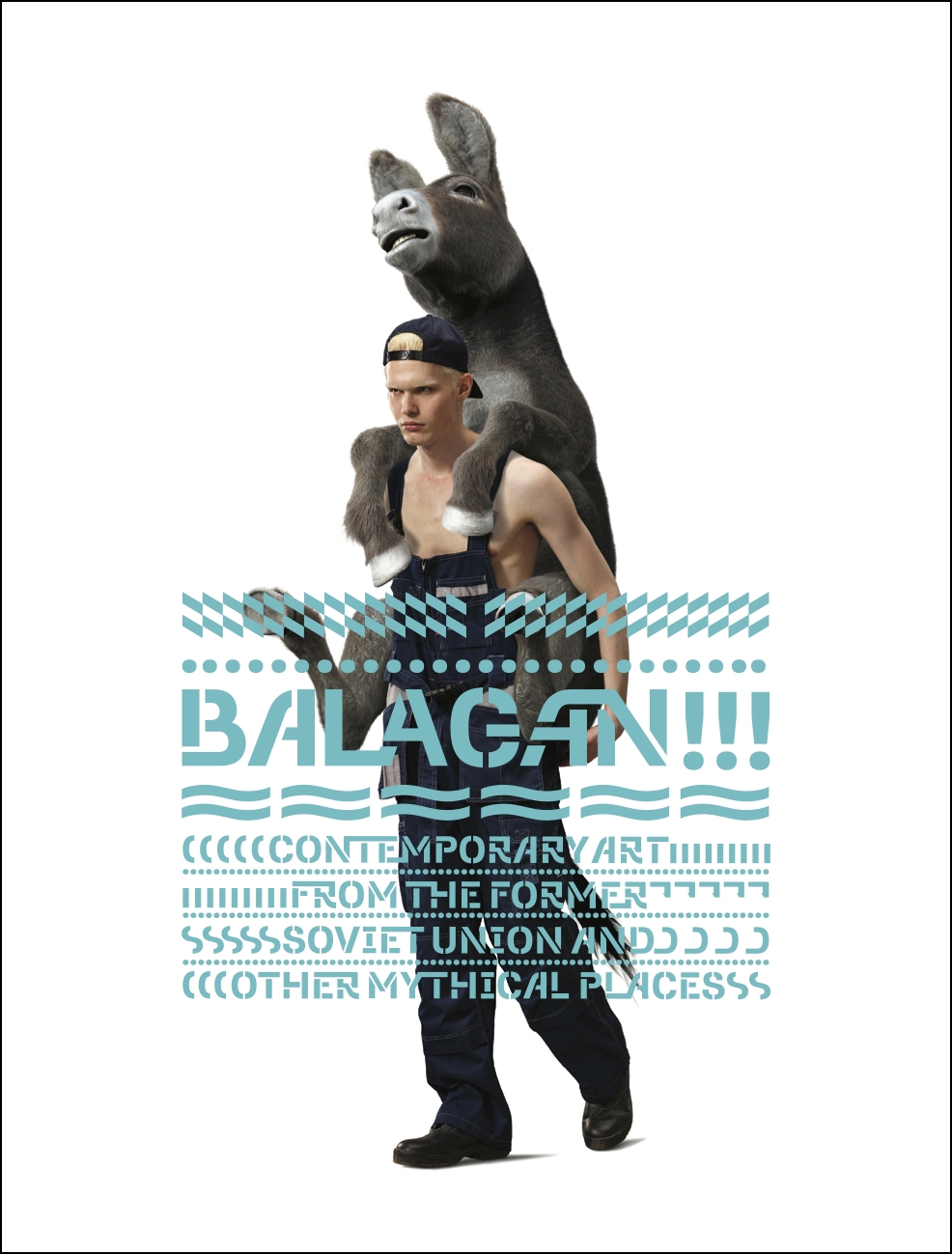
 |
Zuzanna Janin
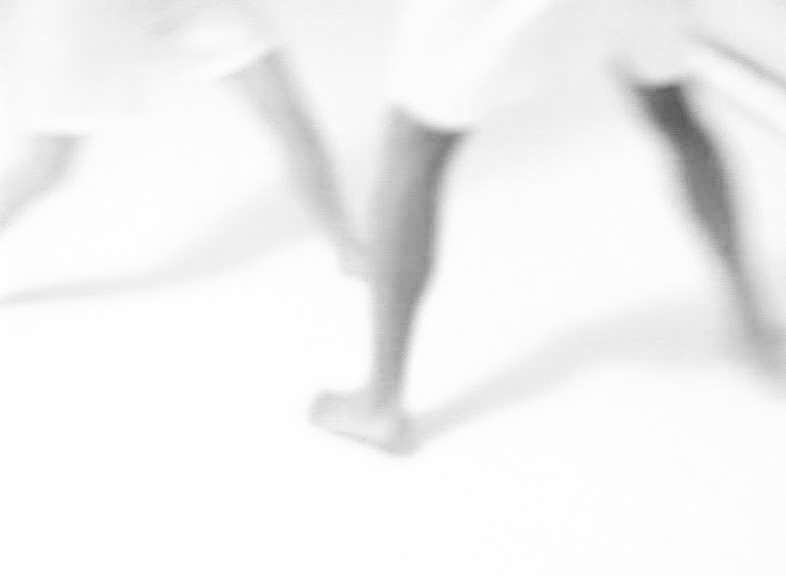
Zuzanna Janin, Pas de Deux (2001), video, 5’
With a title appropriated from ballet, Zuzanna Janin’s Pas De Deux (2001) is a work perpetually relevant in a time when we are all dancing around the issues. Shot in a jerking close-up of two pairs of legs in constant motion on a blank white background, we are drawn into what could be a dance as readily as a fight. It is a dialogue between two bodies, a give and take of power and physical space. It is also a different perspective on one of Janin’s best-known works, the video installation The Fight (IloveYouToo) (2001), where the slight, fragile-looking artist takes on a professional heavyweight boxer. To create this work, Janin spent 6 months training with him in the ring. The boxing match in The Fight is real and harrowing to watch in its intensity. In this work, the camera weaves in and out, dodging and feinting with the fighter’s blows, as close-up and personal as the physical act of combat.
Yet for Janin, this combat between two mismatched opponents is also a dance, a language allowing two bodies to communicate. The direct perspective of the camera in The Fight draws us into the brutality of this uneven combat. But changing the perspective and dropping the camera to ground level suddenly reveals the ambiguity lurking beneath the violence. For Pas De Deux, Janin’s fight performance is shot with the intimacy of a camera moving with the two bodies as they follow the same motions as The Fight, but without seeing the blows. The violent mismatch is transfigured into a match, a term which in sports signifies a contest between opposing competitors, whilst in normal usage it means a harmonious pair.
Zuzanna Janin (b. 1961 in Poland. Lives and works in Warsaw and London.)
Zuzanna Janin is a visual artist and former teen actor, having in her youth starred in the Polish TV serial Szalenstwo Majki Skowron (Madness of Majka Skowron). Having turned her talents to visual art, Janin studied at the Academy of Fine Arts, in Warsaw (1980-87), and in 2016 completed her PhD at the University of the Arts in Poznan, Poland. Throughout her diverse practice of sculpture, video, photography installation, and performative actions, Zuzanna Janin deals with the subject of space, time and memory, as well as the problem of exclusion and absence. The main theme of her work is a conceptual approach to the visualization of processes, changes, comparisons, continuity, what’s “in between.” Janin transforms fragments of private memory, comingling her own experience with collective memory and images of universal history, contemporary social and political problems. Zuzanna Janin is also he co-founder of the independent art space lokal_30 in Warsaw (2005-2012).
Zuzanna Janin has taken part in a number of international Biennals, including the Sydney Biennial (1992), Istanbul Biennial (1992), Soonsbeek (1993), Liverpool Biennial (1996), Łódź Biennale (2010), 54th Venice Biennale (2011) (in the official program of Romania). She had a solo shows, screenings and performances at: Foksal Gallery Warsaw, Kunsthalle Wien, MAM Rio de Janeiro, Salzburger Kunstverein, National Museum Cracow and Warsaw. Group exhibition include: Whitechapel Gallery, London; Royal School of Art, Edinburg; Museum of Contemporary Art, Chicago; Jeu de Pomme Paris; Japanese Palace, Dresden; Kunstmuseum Bern; Hamburger Bahnhof Berlin; TOP Museum Tokyo; Foundation Miro, Barcelona; Martin Gropius Bau, Berlin; Moderna Museet, Stockholm; National Gallery Zacheta, Warsaw; Center for Contemporary Art, Warsaw; Haifa Museum of Art, Israel; Israel Museum, Jerusalem; Ludwig Museum, Aachen; Kunstmuseum Bern; Kunsthalle, Bern; Hoffmann Collection, Berlin; TT The THING, NY.
Since 2019, Zuzanna Janin is a lecturer in Postgraduate Study of Contemporary Art at the Polish Academy of Science (PAN) in Warsaw, Poland. Janin was Guest Professor in a number of universities, incuding: Academy of Fine Art Cracow (Poland) , ASAB Academia del Arte, Bogota (Colombia), Sapir College of Art in Sderot , (Israel), Haifa University (Israel), Academy of Fine Art Bratislava (Slovakia) , Bezalel Jerusalem (Israel), Polish-Japanese Academy of Information Technology in Warsaw (Poland) , Academy of Fine Art Warsaw and King’s College London (UK) and took part in conferences, meetings and talks in many other art institutions.
Alexei Kostroma
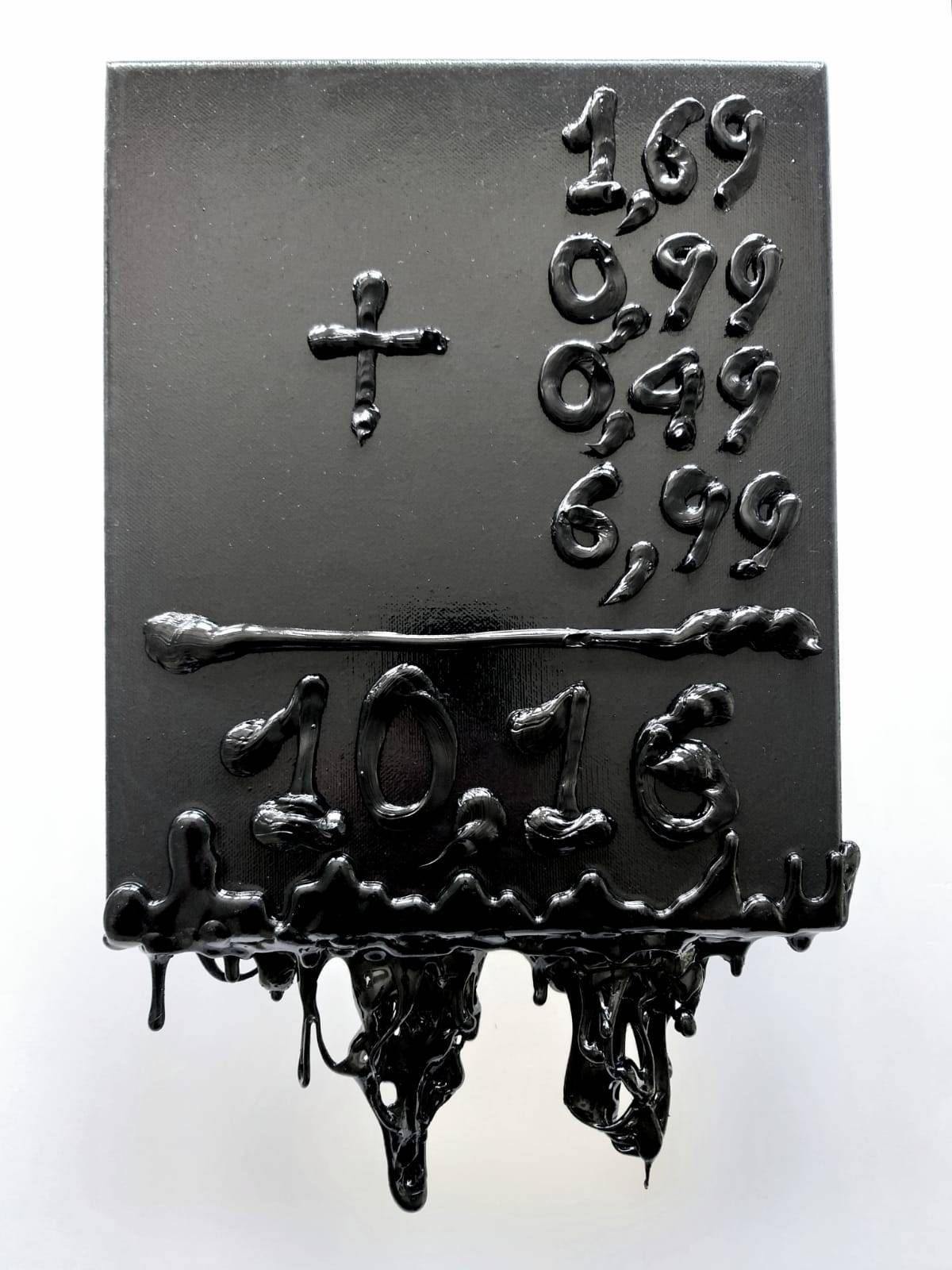
BLACK BILL 10,16 (2021)
Oil, acrylic gel on canvas, 40×25 cm
Courtesy of STUDIO KOSTROMA, Berlin
The works selected for this exhibition embody Alexei Kostroma’s concept of the Organic Way – the artist’s dedication to the study of interrelations between natural and social laws. Working throughout his practice with eggshells, white feathers, figures (numbers), and lemon yellow pigment, Kostroma identifies these four strands in his work as his ‘signs’ or ‘brands’. In his ongoing examinations of the unity of meanings in society and nature alike, and his use of four distinct media as metaphors for these meanings, Kostroma’s work exemplifies the very idea of the Birds & Bicycles initiative to create a factory of metaphors with which to reflect back on our societies.
Shown here are two works from two new series the artist began during the COVID-19 lockdown. Ongoing to this day, these series of works are a portrait of the artists’ experience of the world in pandemic. ELEVEN [Stability] (2020) and BLACK BILL 10,16 (2021) were both created while Alexei Kostroma was in isolation in his studio. BLACK BILL 10,16 forms one entry in Kostroma’s lengthy diary of consumption. Embedding into his works quotations from supermarket receipts for the food he consumes, the original bill is attached to the back of each painting; as much a proof of life as it is a reflection upon the monotony of long months of lockdown. ELEVEN [Stability] uses Kostroma’s idea of the eggshell as an image of the genome, of coding and storage of information, to present us with a single eggshell enumerated with the number 11, signifying stability. In these unstable times when we seem little closer to solving the ongoing global problems of poverty, disease, war, and climate catastrophe, we need all the talismans of stability we can get. An older work, NANO 163, also uses the egg as symbolic of the basis of life, arranging eggshells in a geometric structure, numbered with ink visible only under UV light, to reveal the invisible mathematical harmony of numbers. Yet in the disharmonious realities of our times, by embedding a secret code into his vision of the universe, Kostroma seems to be searching for a formula within nature to solve the many woes we inflict upon it.
Alexei Kostroma (b. 1962 in Russia. Lives and works in Berlin, Germany.)
Alexei Kostroma is an artist, theorist, and researcher living and working in Berlin since 2003. Alexei Kostroma was born in 1962, and in 1989 graduated in painting from the Repin Institute, Imperial Academy of Arts in St. Petersburg. Two years later he founded the “TUT-I-TAM” (ТУТ-И-ТАМ, meaning Here and There) group and began working with an inventory concept, associating natural objects with a theory of numbers. Soon after, he developed the Introspective Actions series of projects engaging social environment wherein he created actions and installations in which he enveloped objects, people, animals, or entire spaces in feathers. Since the early 1990’s, Alexei Kostroma has been working with his Organic Way concept as a study of interrelations between natural and social laws. His practice focuses around series of works using primarily feathers, eggshells, numbers and color theory.
FEATHERS: For Kostroma the structure of the feather represents the unity of chaos (fluff at the base of the feather), order (the precise structure of the main part) and spirit (ethereal weightlessness). The white feather was the iconic material that first made a name for Kostroma in the 1990s. He became famous for the high-profile project ‘Feathering Names and Symbols’, and for installations where he covered various urban objects in white goose feathers: for example, a cannon on the bastion of the Peter and Paul Fortress in St. Petersburg (‘Feathered Aggression’, 1994), the ‘Feathered Purse’ in Germany that gained admission to the Badischer Kunstverein in Karlsruhe, 1996 (role of money in art), etc. In the mass media, feather installations and actions became a pacifist symbol for the smothering of aggression.
EGGSHELL: an image of the genome, of coding and storage of information. Eggshell objects reveal the theme of micro-macro worlds ruled by the invisible mathematical harmony of numbers. The artist uses natural white eggshells to create geometric structures. Applied in invisible ink to the inner surface of the shell are numbers from 1 to 9, the sum of which presents an information code. Rows of eggshells form an image of the atomic microcosm; circles form an image of the macrocosm. Study of the world of atoms has been actively developed in the age of nanotechnology, hence the series is entitled ‘NANO’. These invisible numbers are only visible under UV light.
NUMBERS: universal coding characters. The artist uses digits from 1 to 9. Zero is an abstract mathematical number and therefore excluded from the concept. There is no stopping in nature. Everything is incessantly evolving and in constant motion. Since 1991 Kostroma has been producing large-scale projects for his ‘Inventory’, covering stone waterfronts and urban buildings with figures. While working on the theory of colour he created a spectral-digital scale and published the FNP concept: Figurative Numerical Painting. Since 1999 he has been painting in numbers. In Berlin these numerals take an acutely social character in the series ‘CODES’ and ‘BILLS & DEBTS’, under the slogan WE ALL REVOLVE AROUND TIME, MONEY AND FIGURES.
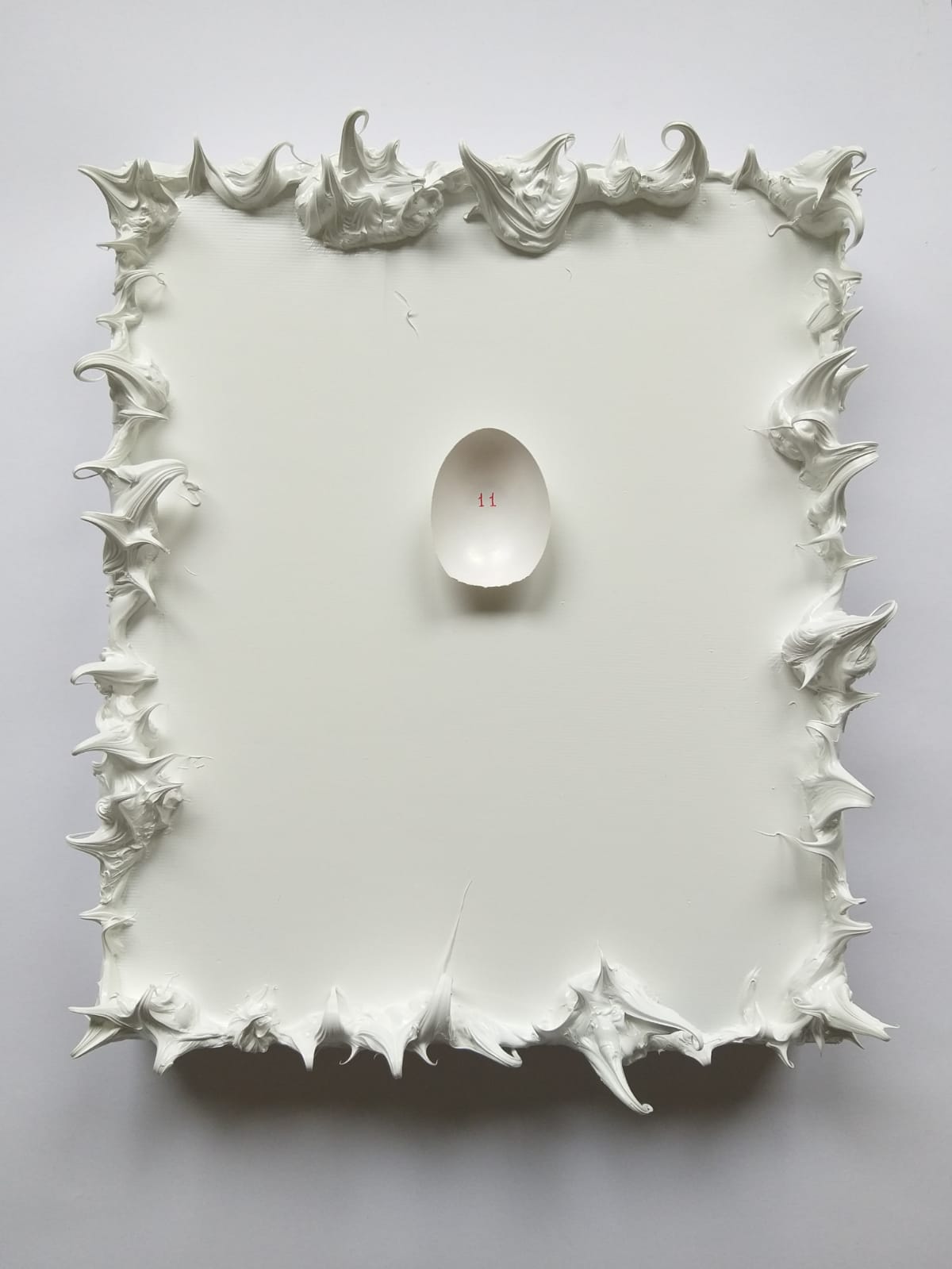
ELEVEN (Stability) (2020)
Oil, tempera on eggshell on canvas, 30x25x6 cm
Courtesy of STUDIO KOSTROMA, Berlin
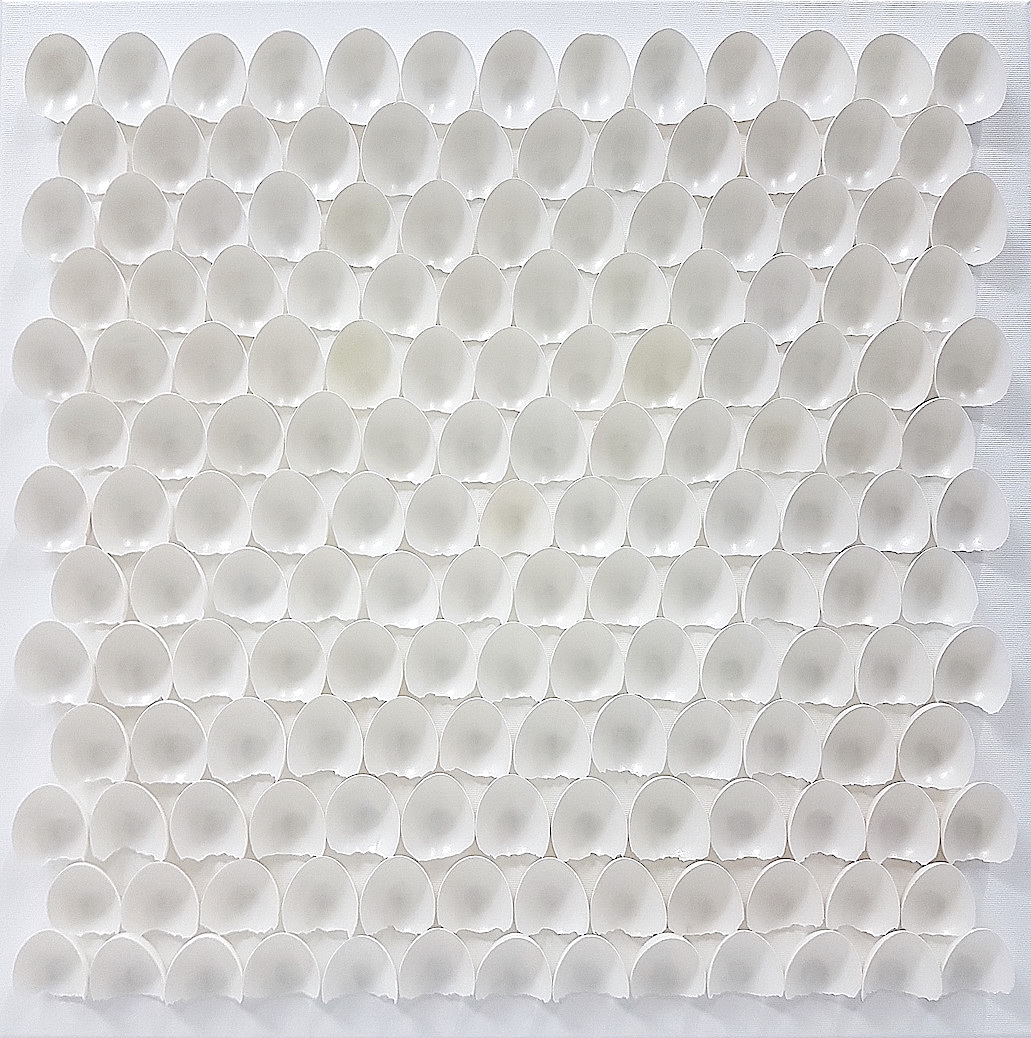
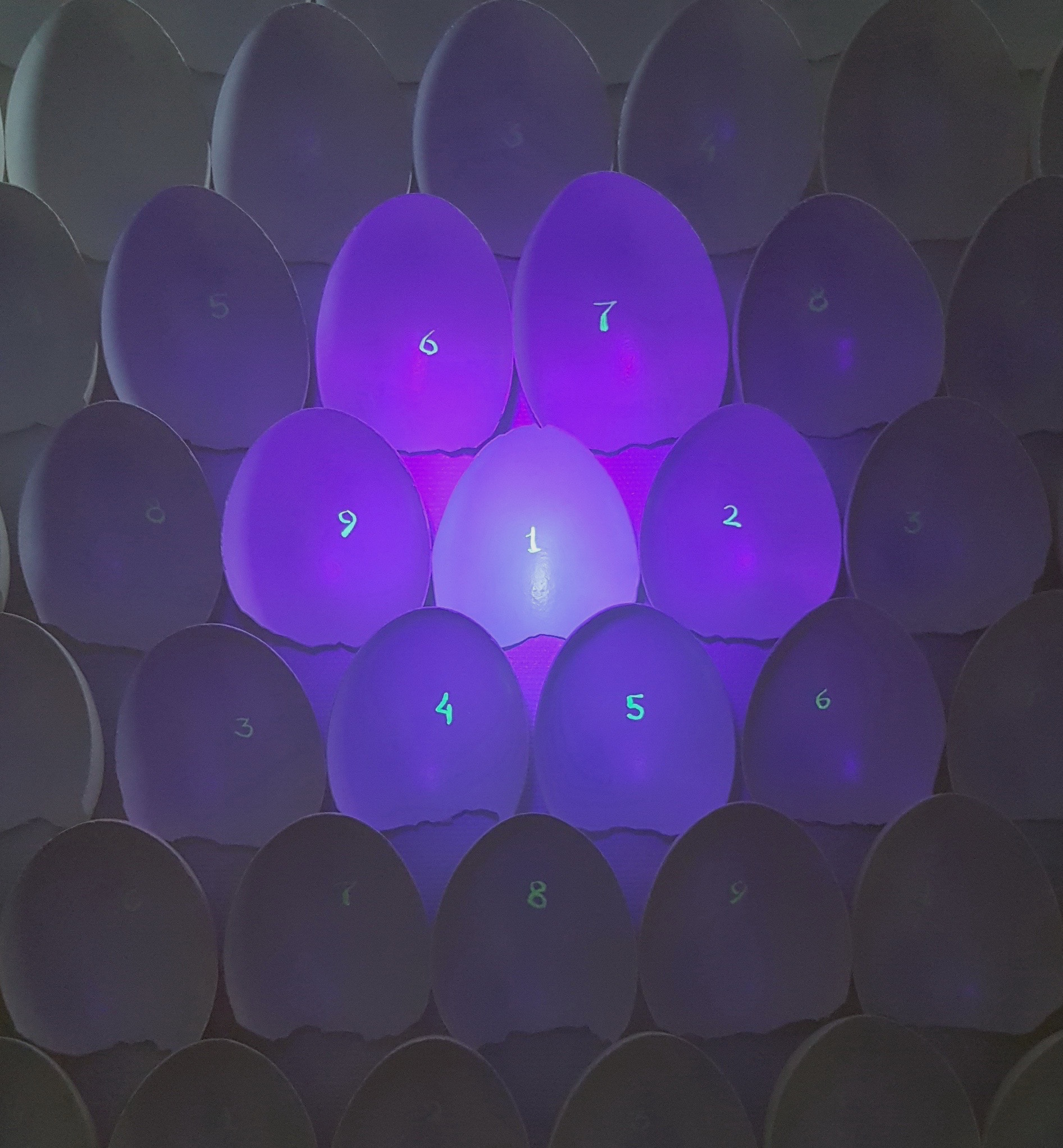
NANO 163 (2017)
Invisible nano color on eggshells on canvas, 60x60x10 cm
Framed in acrylic glass box
Courtesy of STUDIO KOSTROMA, Berlin
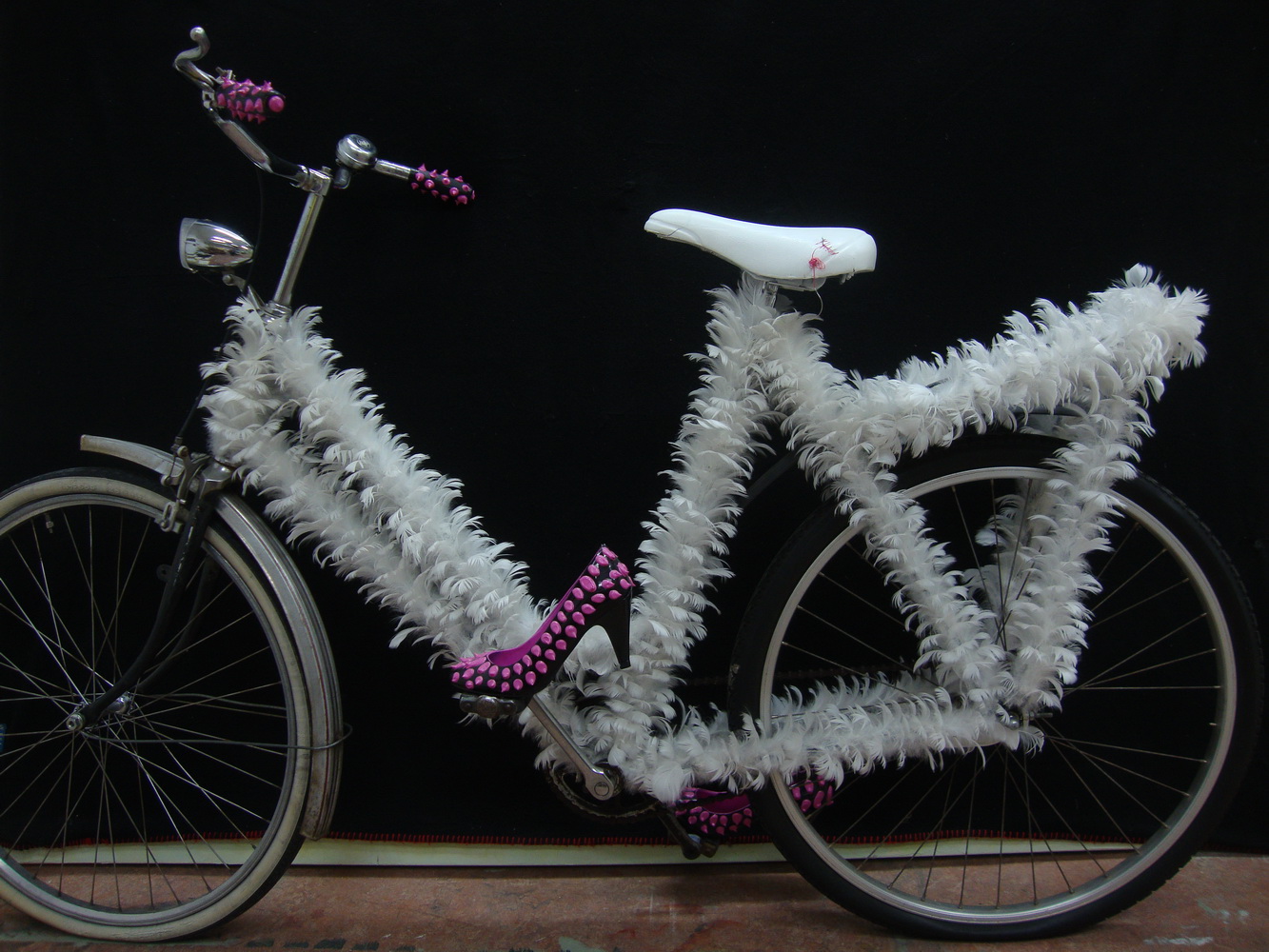
Berlin Girl (Feathered Bicycle) (2008)
Image Courtesy of STUDIO KOSTROMA – Object not on view.
Dominik Lejman
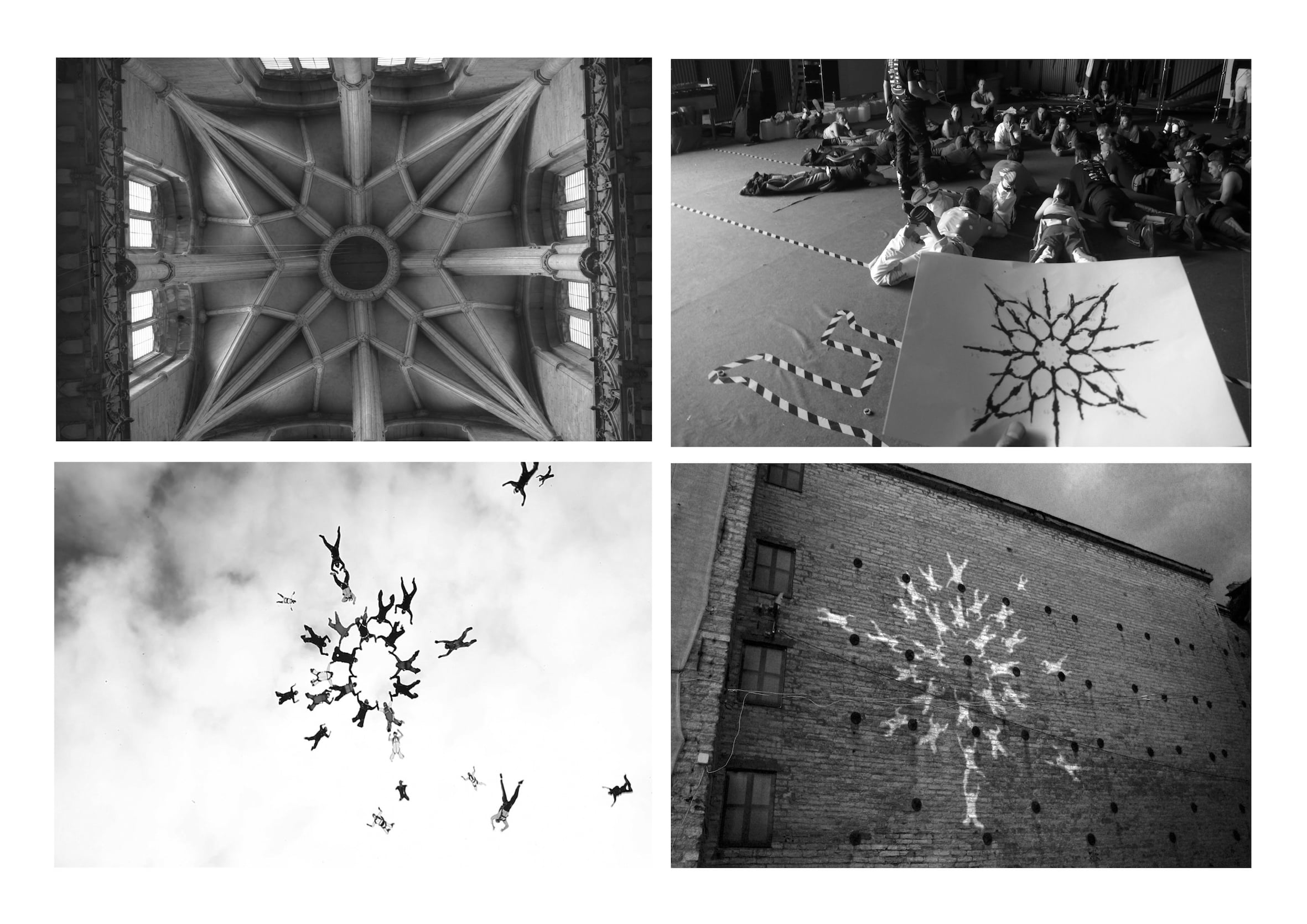
Dominik Lejman, 60 Sec. Cathedral (2011), Projected Video Mural, 24’30” [Courtesy of Persons Projects]
60 Sec. Cathedral is a video-fresco showing a specially trained group of skydivers recreating the vaulted ceiling of Durham Cathedral as they fall to earth. The title of the work is derived from the 60 seconds of free-fall in which they must complete their task. Projected in the artist’s signature style of negative image, these small white figures undulating in the vastness of black space come to resemble at one moment the geometric shapes of gothic church architecture, and in the next the biological forms of chromosomes; continually switching in this way between the spiritual and the scientific origins of life. 60 Sec. Cathedral reveals shapes representing Christian values, philosophy and ethics and also bioethical science, bringing into question notions of good and evil and the biological and molecular formations they might take. In a world of global humanitarian, ecological, and medical disaster, we may often feel as if we are in free-fall. Whether it’s a higher spiritual force, or the natural laws of science which will save us, we all need some source of hope to look up to.
60 Sec. Cathedral is accompanied by a making-of video chronicling the immense preparation and training which resulted in the production of this work.
‘Jump’ Production: Dariusz “Dafi”, Jarosław “Widget” Szot, Artur “Bravos” Ceran (cameramen).
Sky Divers: Marcin Szot, Jacek Łącki, Krzysztof Kiebała, Markiz Białecki, Grzegorz Szusta, Kinga Komorowska, Jarosław Szot, Dominika Godlewska, Robert Wolski, Amelia Bobowska, Maciej Machowicz, Dariusz Banaszkiewicz, Robert Przytuła, Sebastian Matejek, Maciej Węgrzecki, Witold Kielerz, Maciej Król, Artur Karwowski, Grzegorz Leonow, Anna Dzido, Agnieszka Szczerbakow, Marcin Laszuk, Agata Chmielak, Izabela Pilarczyk, Laura Stachowska, Dariusz Filipowski, Artur Ceran, Marek Nowakowski.
Dominik Lejman (b. 1969 in Gdnask, Poland. Lives and works in Berlin, Germany, and Poznan, Poland.)
Dominik Lejman graduated from the Faculty of Painting and Graphic Arts at The School of Fine Arts in Gdańsk in 1993, and in 1993-95 studied at the Royal College of Art in London. In 1996, Lejman completed a further research degree at the Academy of Fine Arts in Gdańsk. He has lead the painting workshop at the University of the Arts in Poznań since 2005. Dominik Lejman is the winner of the 2018 Berlin Art Prize awarded by the Akademie der Künste, and is the recipient of many other awards, including: Polityka’s Passport Award in 2001, The Kosciuszko Foundation, The Trust for Mutual Understanding, Location 1 in New York, and The Polish Ministry of Culture. Dominik Lejman’s works have been exhibited broadly in many international biennales, museums, and galleries.
Dominik Lejman’s practice is one of painting with time. Since the 1990’s he has been exploring the boundaries of painting by combining videos with paintings. His video projections onto architecture become murals, while in his paintings he projects videos onto prepared canvases such that the video lives in the painting, seamlessly intermingling the still and moving image. In his work, Lejman pays particular attention to architecture and spaces as well as to the question of how they influence or even determine people’s patterns of movement. The structures that the artist uncovers in the process and presents in his installations are extremely fragile, often last only for several moments, cause the limits of space to blur, and in part directly involve the viewer.
Almagul Menlibayeva
Almagul Menlibayeva, Ulugh Beg: Futuristic Machine of Central Asia (2020), Single-channel version of 10-channel Video Installation, with Sound, 38’22”
Almagul Menlibayeva, Astana. Departure (2016/20), 4K Video, with Sound, 21’30”
Originally made for the 2nd Lahore Biennial “Between Sun and Moon”, the remarkable 10-channel video installation Ulugh Beg: Futuristic Machine of Central Asia was shown at the PIA Planetarium of Lahore as an immersive experience with an original soundtrack by German Popov in quadrophonic sound. Shown here in a single-channel format, this work is a reflection upon the life of the historically revered ruler of Samarkand in the Timurid Empire, Sultan Mirzo Ulugh Beg (1394-1449). A famed astronomer, mathematician, musician, poet, and educator, Ulugh Beg’s legacy includes a 15th-century observatory, where much of the work was filmed. Shot on location in Samarkand, in what is today Uzbekistan, this multilayered film tells the story of a man far ahead of his time. In a palimpsest comingling expert interviews with documentary materials, recreations of historical episodes, found footage, digital animation, and an electronic soundtrack referencing the complex musical theory developed by Ulugh Beg, this film paints the portrait of a visionary leader who came to a tragic end. In so doing, this complex work interweaves past and present, myth and reality, in an elegy for the cultural and environmental despoliation currently taking place throughout Central Asia. Showing the dangers of violence bred by fear and ignorance, of knowledge snuffed out by political and religious dogmas, this film also addresses the origins of the space race, of the satellite technologies which enable our contemporary ways of life. What was for Ulugh Beg the exploration of a distant border, physically and ideologically unreachable in his time, is now anew the next frontier for exploration. Much like an astronomer herself, Almagul Menlibayeva gazes out at space as the next border we have already begun to cross. In the same year as Elon Musk’s SpaceX and Richard Branson’s Virgin Galactic race to bring the first commercial passengers to outer space, Menlibayeva’s works present a timely warning against mankind’s despoliation of space and the consequent pollution of our planet.
Both of Menlibayeva’s works shown in this exhibition critically explore the current social, economic and political transformation in post-Soviet central Asia and Soviet modernity. The artist confronts the viewer with architectural sites and ruins of oppression, with haunted, surrealistic figures. Menlibayeva’s video Astana. Departure deals with the Russian-run Cosmodrome Baikanur in Kazakhstan, which is the largest producer of space debris. The artist addresses the uncontrolled pollution of the world’s hemisphere and the contamination of the ground by 11,000 tonnes of space metal with particularly toxic UDMH that is still used. She calls that scrap recovery as the “Used Futures”, which became a part of the local economy causing mass deaths of birds and wildlife. It is a repetitive scenery of the concept of the future being abused as a product and commodity for ideological, political systems and for economical and religious purposes. Furthermore, the work combines footage from Kazakhstan’s Tokamak thermonuclear testing device with critical animations of the construction of the city Astana, recently renamed to Nur-Sultan. Becoming Kazakhstan’s capital in 2007, the city was built in a short period on a desert steppe and developed quickly into one of the most modernized cities in Central Asia. Menlibayeva comments, this turbo capitalist growth created a disbalance between the futuristic city and its inhabitants. Discussing former secret military nuclear testing territories such as “Kurchatov” and its traumatic impact on the landscape and the uninformed citizens in her previous works, this video is dedicated to high tech latest- generation of nuclear reactors echoing the region’s collective trauma from the past. The work reflects on the interconnectivity of architecture, science and politics revealing the complex intersection of a totalitarian system in the past and its on-going legacy in the present.
Almagul Menlibayeva (b. 1969 in Almaty, Kazakh SSR. Lives and works in Berlin, Germany and Almaty, Kazakhstan.)
Almagul Menlibayeva is a video artist, photographer, and curator, holding an MFA from the Art and Theatre University of Almaty. Working primarily in multi-channel video, photography and mixed media installation, Menlibayeva’s practice addresses such critical issues of post-Soviet modernity as: the social, economic, and political transformations in Central Asia; de-colonial re-imaginings of gender; environmental degradation; and Eurasian nomadic and indigenous cosmologies and mythologies. In conjunction with her solo exhibition ‘Transformation’ at the Grand Palais in Paris (France, 2016-17), she was awarded the prestigious Chevalier Ordre des Arts et des Lettres by the French Minister of Culture in 2017. Among other notable awards, she was the Winner of the Main Prize of the International Film Festival Kino Der Kunst (2013) in Munich, Germany, and shortlisted for the Sovereign Asian Art Prize, Hong Kong (2020). Menlibayeva participated in numerous international biennales, including: the Asia Pacific Triennale, Brisbane, Australia (2020, 2012); Lahore Biennale, Pakistan (2020); Channels Festival, Biennial of Video Art, Melbourne, Australia (2019); Cairo Biennial, Egypt (2019); Gangwon International Biennale, South Korea (2018); Daegu Photo Biennale (2016); Venice Biennale, Italy (2005, 2007, 2009, 2015); Moscow Biennale, Russia (2011, 2015); Kiev Biennial, Ukraine (2013); Sydney Biennale, Australia (2006, 2012); Sharjah Biennial, UAE (2010); Mediterranean Biennale, Israel (2010); and many others. Selected recent solo exhibitions include: De. Groen Fine Art Collection, Arnhem, Netherlands (2019); Videoart at Midnight #98: Almagul Menlibayeva, Berlin (2018); Transformation, Grand Palais, Paris, France (2016-2017); Union of Fire and Water, 56th Venice Biennial, Italy (2015); Transoxiana Dreams, Videozone, Ludwig Forum, Aachen, Germany (2014); An Ode for the Wastelands and Gulags, Kunstraum Innsbruck, Austria (2013); Daughters of Turan, Casal Solleric, Palma De Mallorca, Spain (2012); LATT: Europe at large #6, Museum van Hedendaagse Kunst (M HKA), Antwerp, Belgium (2010); among others, along with numerous international group exhibitions.
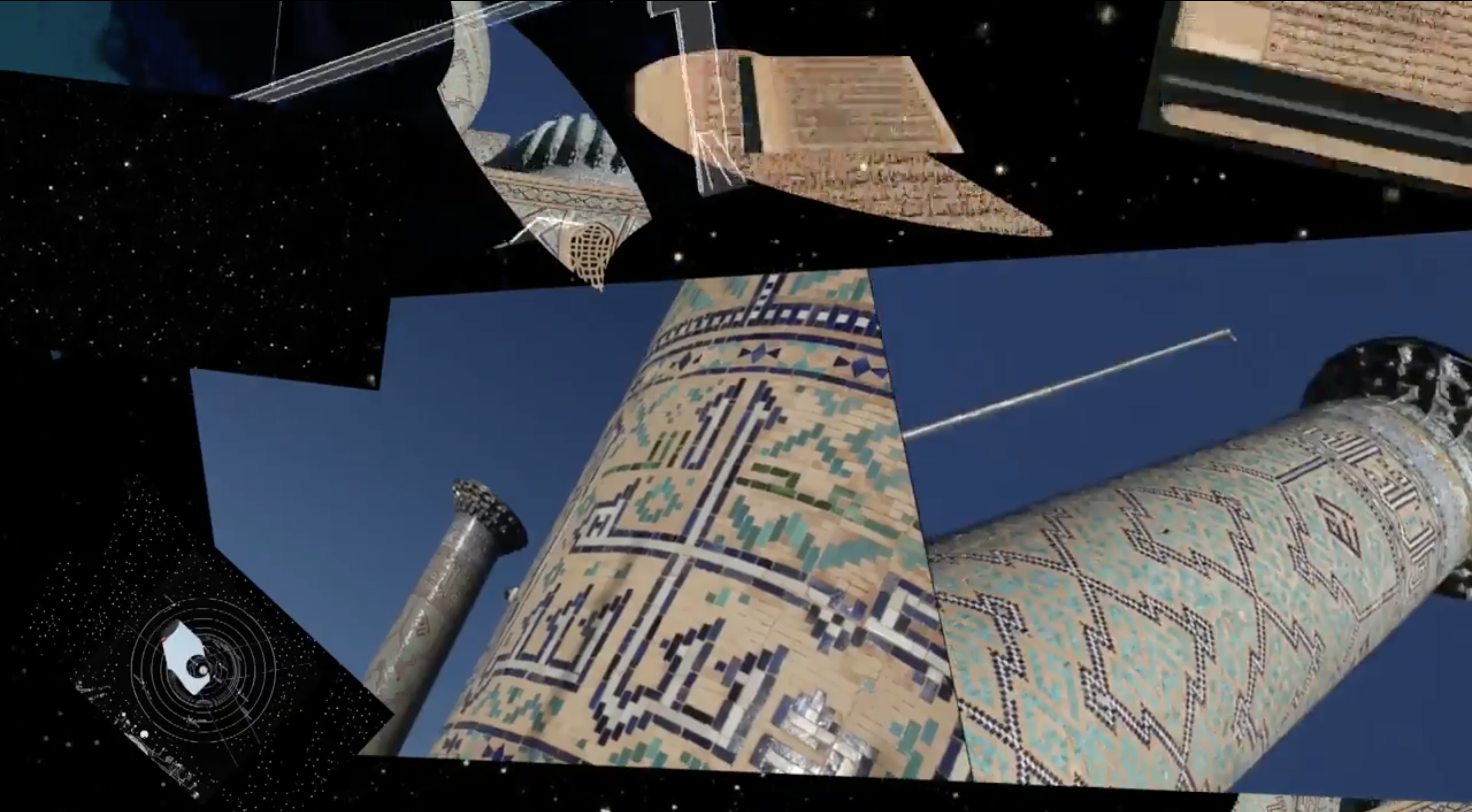
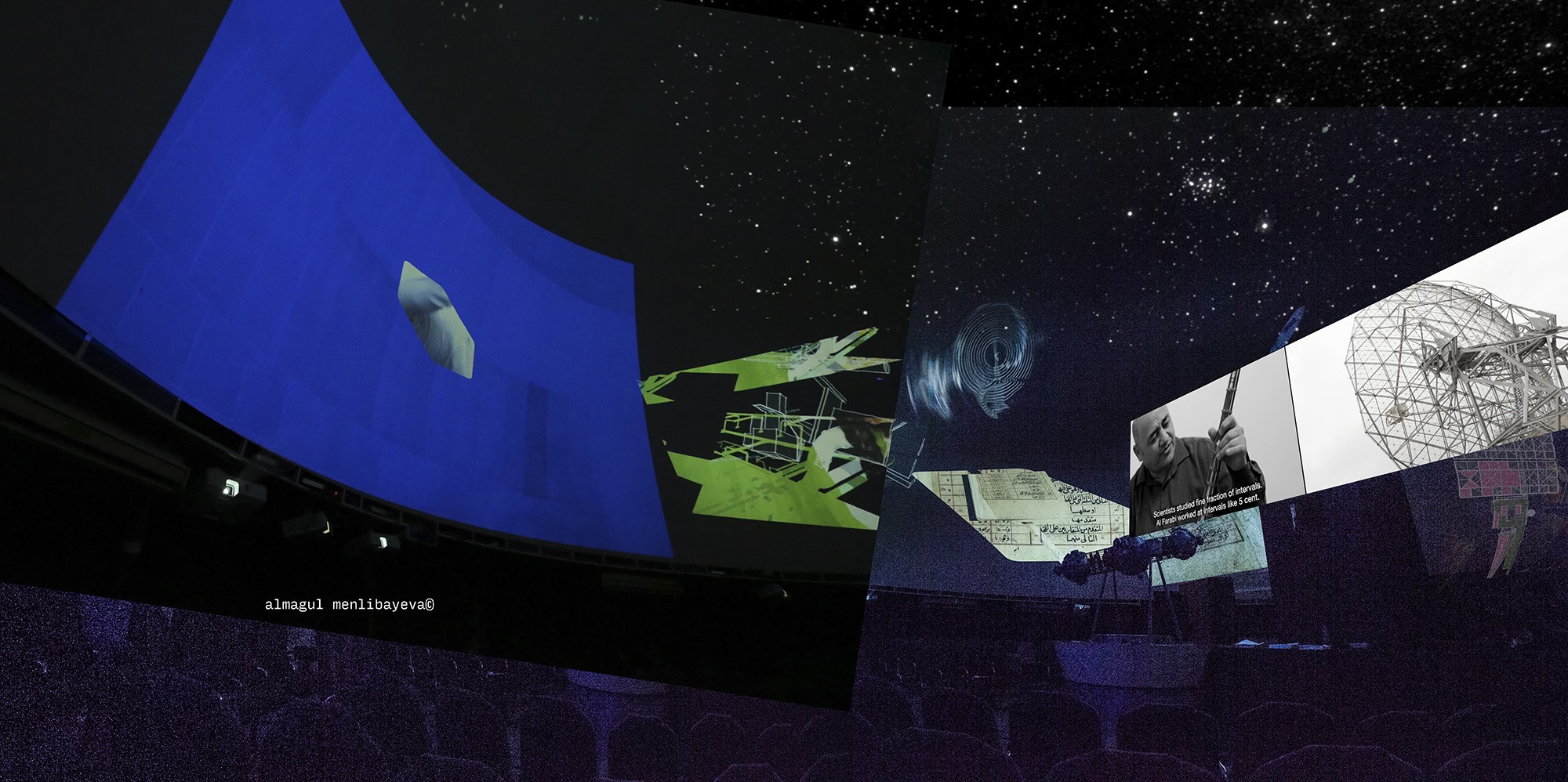
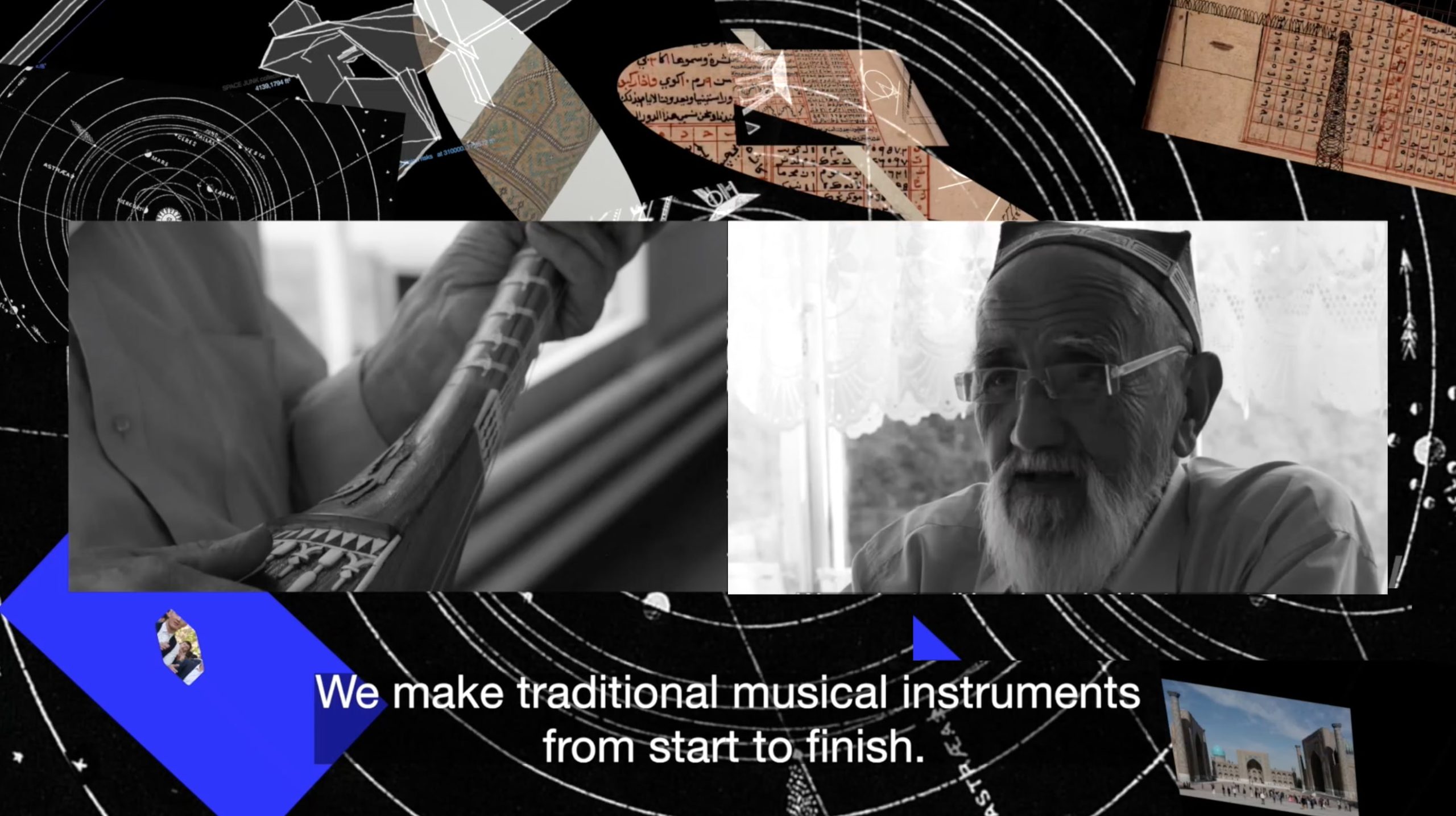
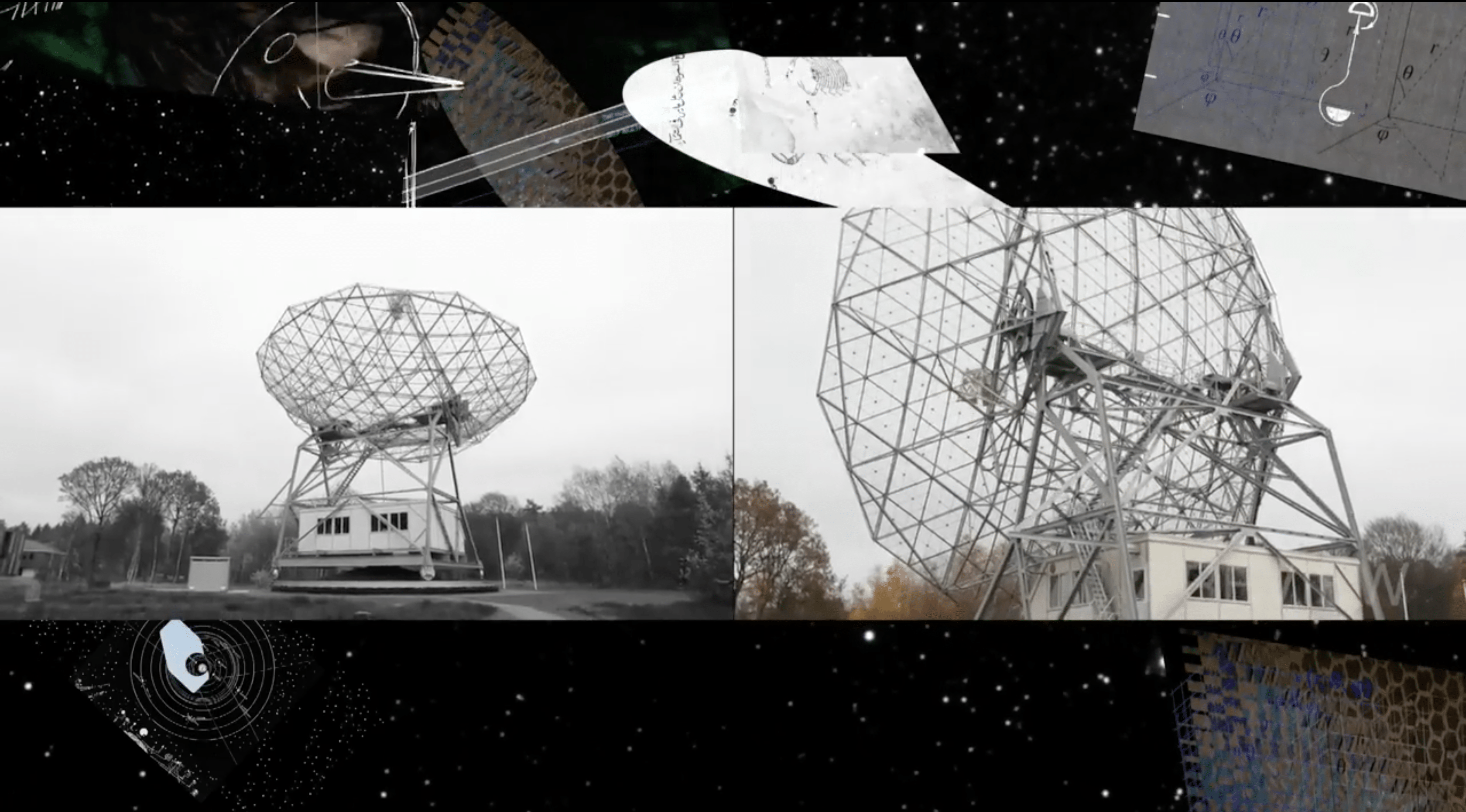
Ulugh Beg: Futuristic Machine of Central Asia (2020)
Single-channel version of 10-channel Video Installation with Sound, 38’22”
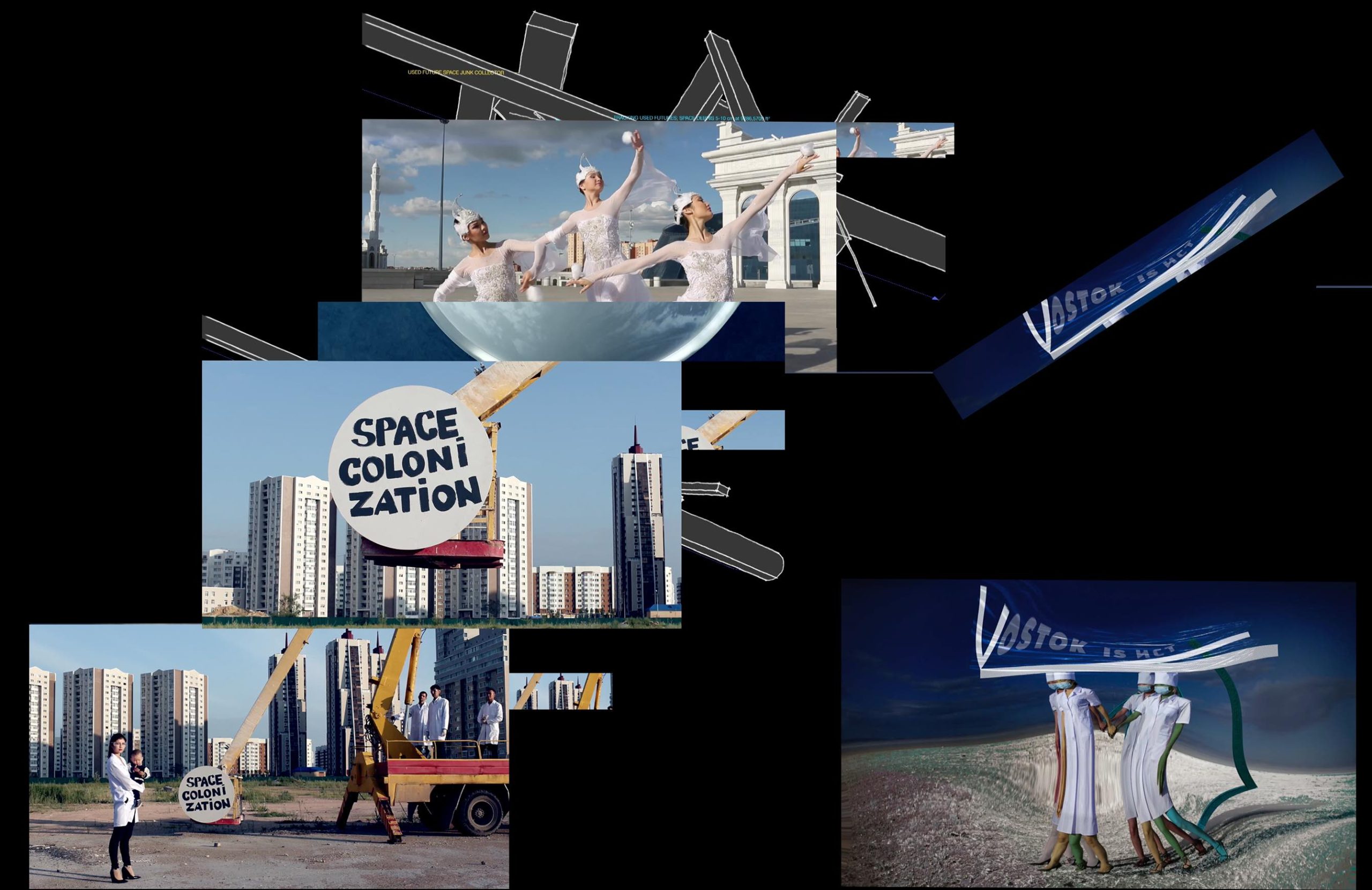
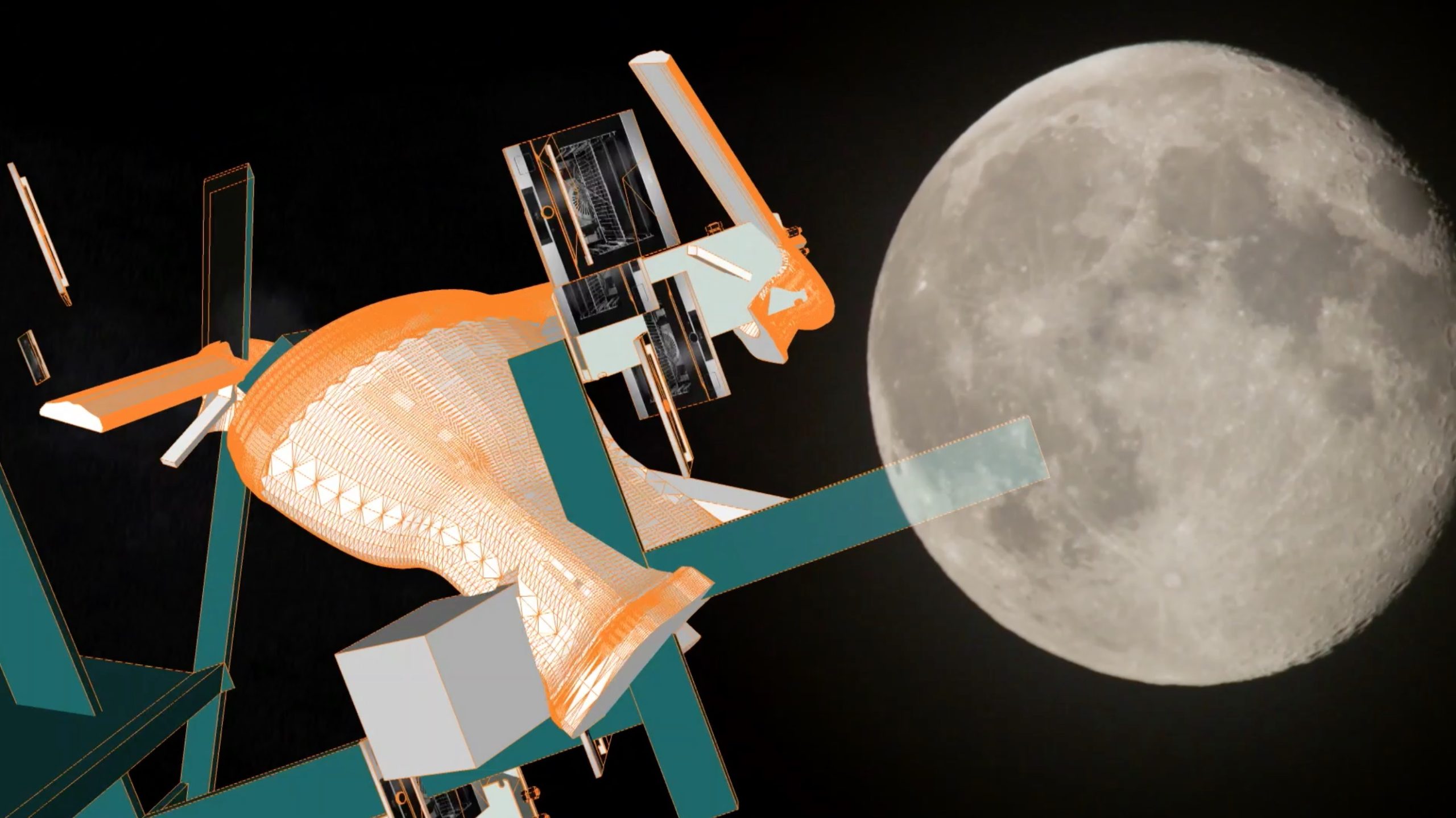
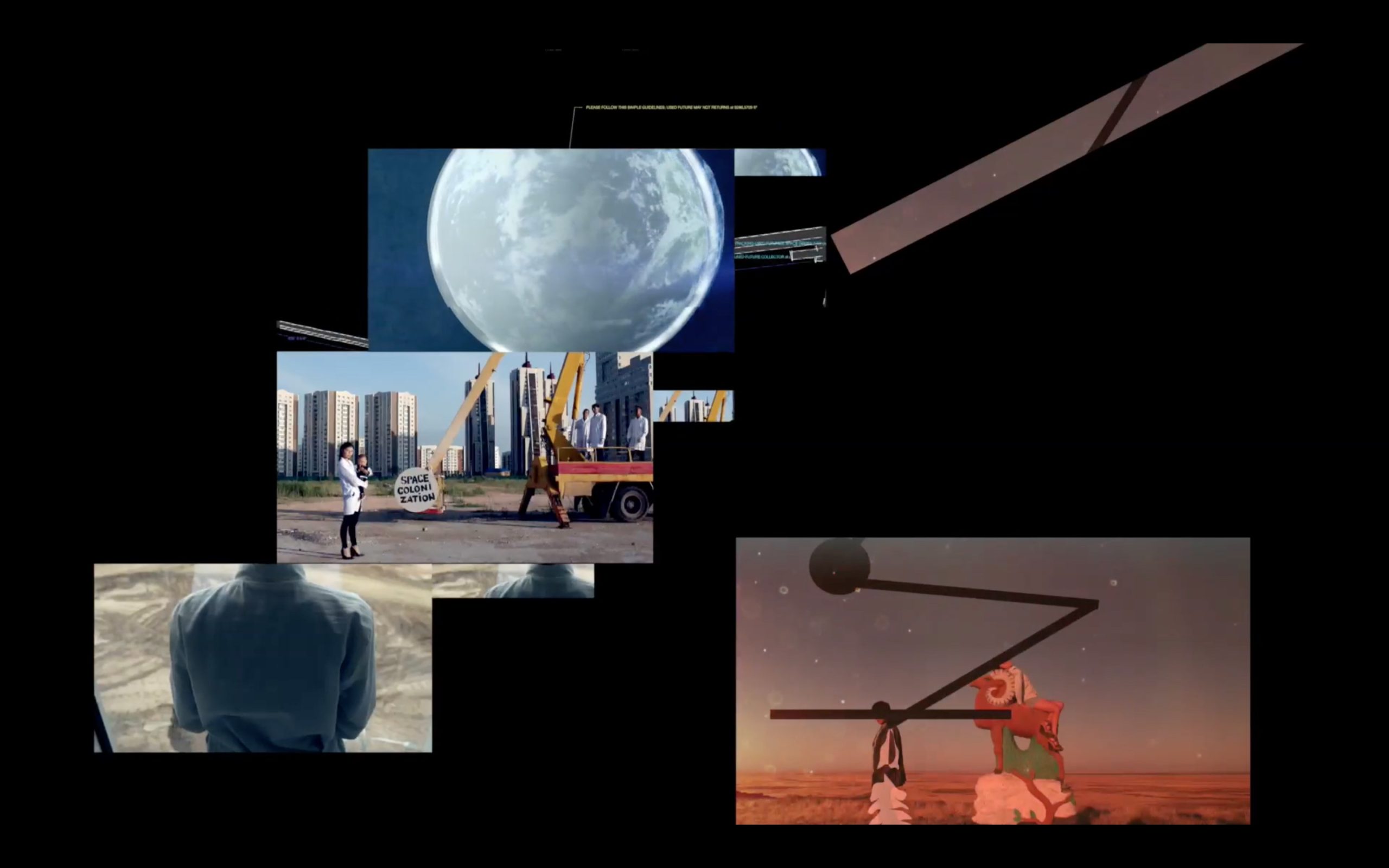
Astana Departure (2016/20), 4K Video, with Sound, 21’30”
Hajnal Nemeth
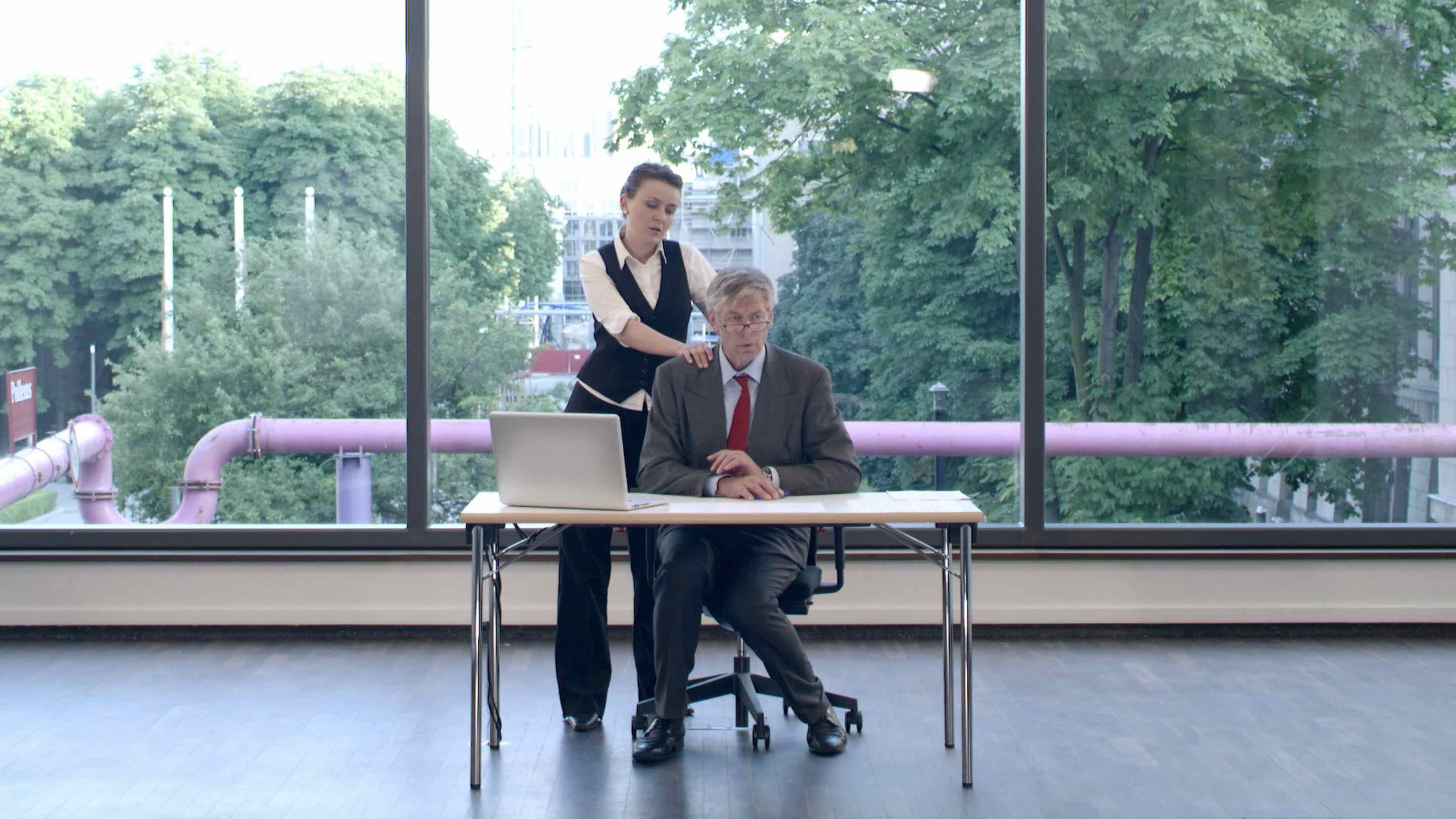
Hajnal Németh, The Loser [version 1] (2012), Operatic Video Performance, 35”58
Video Stills: Camera, István Imreh
Two confessions are sung, performed by four soloists and completed with self-introductions by the choir. The lyrics of the songs are comprised of confessional monologues of fallen leaders, shortened and rhythmical rewrites of their self-analytical confessions. A politician and a banker give their testimonies: the direction of their fascinations differs, but the initial enthusiasm, the feeling of devotion, the experience of struggle and power, the ignorance of responsibility, the faith in ideologies and its gradual loss, the degeneration and downfall are all similar factors. It is not the confrontation of different ideologies, but their self-contradictions and the contrast of individual and collective responsibility that are put to the test on the stage.
This work from 2012 has in the intervening years proven itself all too prescient. The ignorance and irresponsibility of politicians and industry leaders has grown undiminished. In the western world alone, between Brexit, the recent US elections, the muscle-flexing of Russia, the rise of the far-right throughout Europe, and on the cusp of the upcoming German elections, we are witnessing a perpetually unfolding drama far surpassing any opera. As a form of art wherein the human voice takes flight to elevate our consciousness, opera has, nevertheless, traditionally addressed even the most base moral and political issues of its day. The first performance of The Loser took place on an open stage, shot in the vacated conference room of Collegium Hungaricum Berlin – the Hungarian Cultural Institute, itself an institution subject to the political winds of its home country. Via the large windows of the hall, the panorama of Berlin was the real set of the live and lifelike piece – a panorama which, at that time, was occupied by the construction site of the highly contested architectural reanimation of Germany’s colonial past; the building of the Humboldt Forum despite the countless voices raised against it.
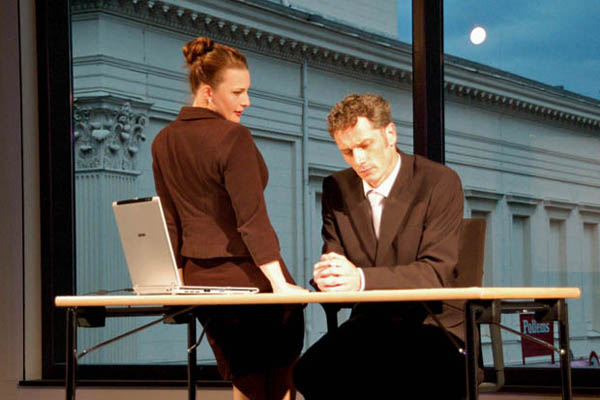
Hajnal Németh (b. 1972 in Hungary. Lives and works in Berlin, Germany.)
In her artistic practice Hajnal Németh creates musical performances, spatial installations, films and photographs. Her artistic activity is based on performative works of different durations, which are mainly musical interpretations of written texts, drawing on the broad spectrum of musical tendencies (pop, rock, jazz or opera) and the tools and devices of other performative fields. Focused on the process as much as the end product, Németh often includes rehearsals, the artifacts of performances and audience participation in her work. Her projects are mostly based on textbooks containing her own writings or modified quotations such as lyrics, poems or prose fragments, reflect on the gesture of quotation. By rewriting the quoted text and developing a quasi-corrected version, she endows the text with an entirely new meaning.
Németh runs a course at Hungarian Academy of Fine Arts, Intermedia Department in Budapest since 2010, having graduated from there in 2000. Hajnal Németh represented Hungary at the Venice Biennale 2011. Her work was nominated for the Nam June Paik Award in 2010. Other notable awards incude: Munkácsy Award (Hungary, 2011); AICA Award (Hungary, 2011); Deutsche Akademie Rom, Villa Serpentara Award (2013); Leopold Bloom Art Award (Hungary, 2017). Németh has participated in numerous solo and group exhibitions at prestigious art institutions in Europe, America and Asia, including MUMOK, Vienna; Martin Gropius Bau, Berlin; The Kitchen, New York; Renaissance Society, Chicago; Tate Modern, London; Art Museum, Singapore; Ludwig-Museum, Budapest; TENT, Rotterdam; Museum Kunst Palast, Düsseldorf; Kunstmuseum Stuttgart; Kunsthalle, Budapest; Kunsthalle Emden; Zamek Ujazdowski, Warsaw; Comunidad de Madrid; 2nd Berlin Biennale, KW Berlin; Casino Luxembourg; Moderna Museet, Stockholm; Musée d’Art moderne de Saint-Etienne; Picasso Museum, Barcelona; Palais de Tokyo, Paris.
David Szauder
David Szauder, Parallel Universes (2021), 4 Digital Animation Loops, with Original Sound
I. The Dream of the Statue (Budapest) 1971-2021, 1’20”
II. Changing of the Guard (Berlin, DDR) 1972-2021, 1’14”
III. Busó (Mohács, Hungary) 1967-2021, 1’09”
IV. Parallel Dimension (Budapest, Prague, Balaton) 1967-2021, 1’10”
In this series of work, Hungarian media artist David Szauder re-animates original Super 8 footage shot by his grandfather in the 1960-80’s. Superimposing his own somewhat surrealistic universe onto the historic footage, Szauder conveys the sense of a world perpetually going slightly mad. And perhaps it is. In the state of our world today, where nationalism, political tensions, and the closing of borders are on the rise, it would indeed be mad not to look back upon the lessons of history. The artist’s grandfather developed his passion as an amateur filmmaker with the purchase of his first 8mm camera in the 1960s. Through its lens, he recorded glimpses of the world he was allowed to see, travelling as much as he was permitted within the political constraints and physical borders of the Eastern Bloc. Upon his grandfather’s death, David Szauder inherited a time-machine – a collection of over 1000 rolls of film archiving the world as his grandfather saw it. This footage forms the basis for much of Szauder’s recent work, exploring memory in the light of personal and collective history.
The Dream of the Statue (Budapest) 1971-2021
For the past seven decades, the most distinctive feature of the Budapest skyline standing tall above Gellért Hill is the Liberation Monument, a Soviet-built metal statue looking eastward as a tribute to the Red Army’s triumph over Hungary’s Nazi occupiers during World War II. Because of this politically fraught past, several movements attempted to remove this feminine figure over the years, but it has persevered to become an iconic symbol of Hungary’s capital.
Changing of the Guard (Berlin, DDR) 1972-2021
These guards protected the eternal flame in Berlin’s Neue Wache, the Memorial for the Victims of War and Tyranny on Unter den Linden, between 1969 and 1989. Yet in Szauder’s universe, they’ve changed their position and are now protecting the Tesla Model S. The world has found its new eternal flame, updated for our aspirational economy of luxury in a form impossible to imagine at the time the original footage was shot.
Busó (Mohács, Hungary) 1967-2021
The Hungarian folk tradition of the Busó festival, shot in the 1960’s by the artist’s grandfather, remains largely unchanged to this day. Marking the end of the annual Carnival season, this procession of terrifying costumed monsters was immensely popular during the Communist regime, supported by the government as a safe non-political form of entertainment. Yet the enduring popularity of Busó today is derived from its appropriation by an opposing force. With a government leaning further and further to the right, the folklore and cultural traditions of Hungary are being today deployed to celebrate nationalist ideals and values.
Parallel Dimension (Budapest, Prague, Balaton) 1967-2021
The 1st of May was celebrated as a holiday for workers in every socialist country, with parades of labourers from factories and communes, pioneers and party members. Szauder comingles footage from various May Day celebrations in Hungary and what was then Czechoslovakia with his whimsical animations in a game between visible and invisible – much like the political subtexts of these enforced displays of ideology.
David Szauder (b. 1976 in Hungary. Lives and works in Berlin, Germany.)
Media artist and curator David Szauder (b. 1976 in Hungary) studied Art History at the Eötvös Loránd University and Intermedia at the Hungarian University of Fine Arts in Budapest, and completed a Masters Fellowship at the School of Arts, Design and Architecture at the Aalto University in Helsinki. From 2009 to 2014 he worked as the curator at the Hungarian Cultural Institute in Berlin (.CHB). David Szauder is a visiting lecturer at the Film Academy, Potsdam, in addition to leading workshops on interactive media in Berlin and Budapest since 2010. He is the Founder and Artistic Director of Buildingscape, an initiative to turn construction sites into venues for public art. Since 2019, he is the New Media Advisor for the Artistic Director of the VEB 2023 European Capital of Culture.
David Szauder has participated in numerous international projects as artist and curator. Projects in cooperation with MOMENTUM include: “MOMENTUM InsideOut: Lockdown Schmockdown” at CHB Collegium Hungaricum (Berlin, 2021); “Light Space Modulator” at MOMENTUM (Berlin, 2020); “Art Nomads: Made in the Emirates” at Studio 1, Kunstquartier Bethanien (Berlin, 2016);“Ganz Grosses Kino” KIK Eight at Kino International (Berlin, 2016); MOMENTUM InsideOut: Amir Fattal, “Atara” (Berlin Gallery Weekend, 2015); MOMENTUM InsideOut: “A Time for Dreams” & “Budapest Sketch”(Berlin Art Week, 2014); “PANDAMONIUM Preview // INTERPIXEL: Media Art from Shanghai and Budapest” (Berlin Gallery Weekend, 2014); “INTERSECTION”: Film and Video Art Panel Discussion for Berlinale (Berlin Film Festival, 2014); “THRESHOLDS”: Performance, Exhibition, Discussion (.CHB, Berlin Art Week, 2013); “THRESHOLDS” (TRAFO Center for Contemporary Art, Stettin, Poland, 2013-2014); MOMENTUM InsideOut: “Mass & Mess” (TRAFO Center for Contemporary Art, Stettin, Poland, 2013).
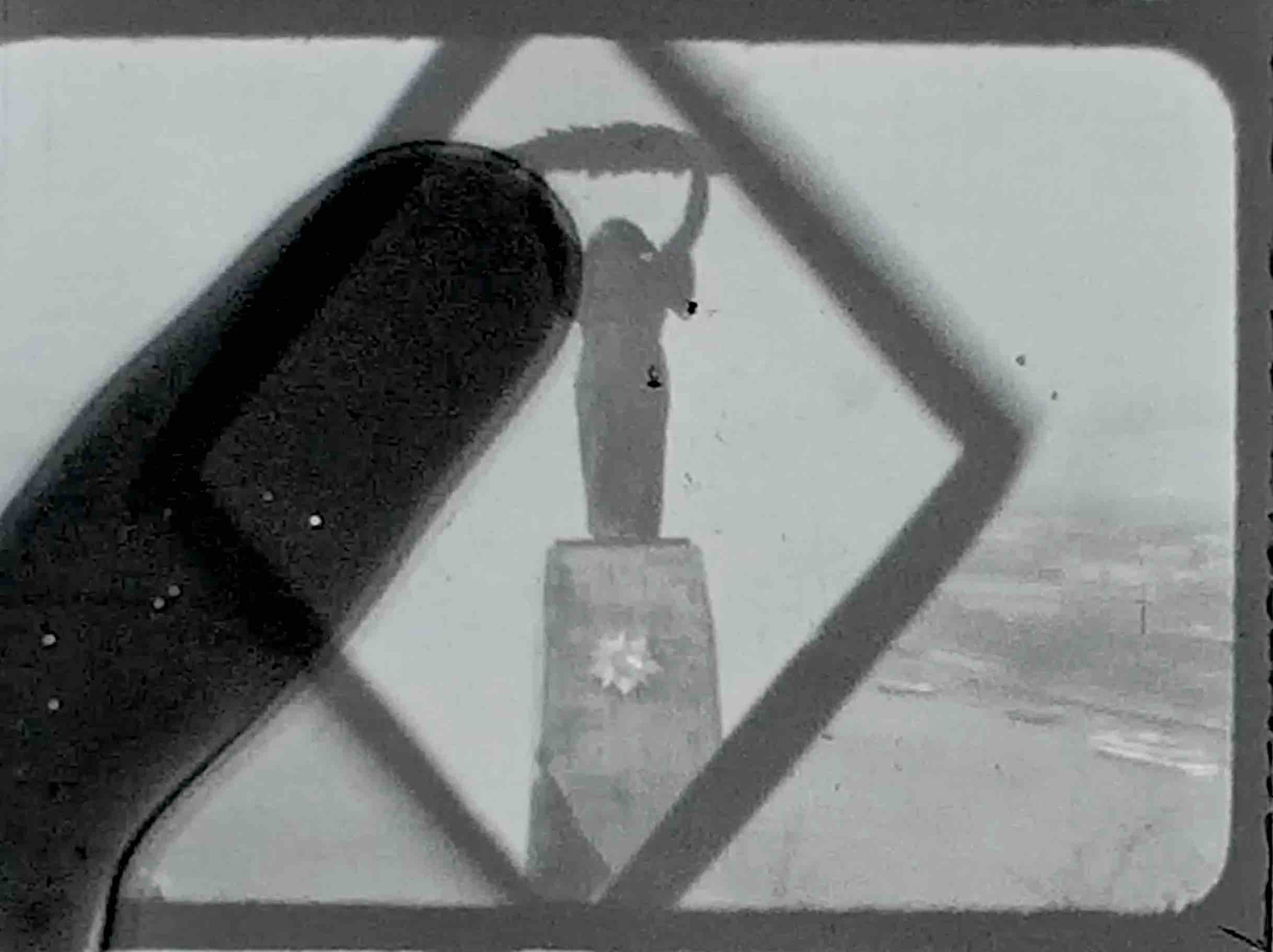
IThe Dream of the Statue (Budapest) 1971-2021, 1’20”
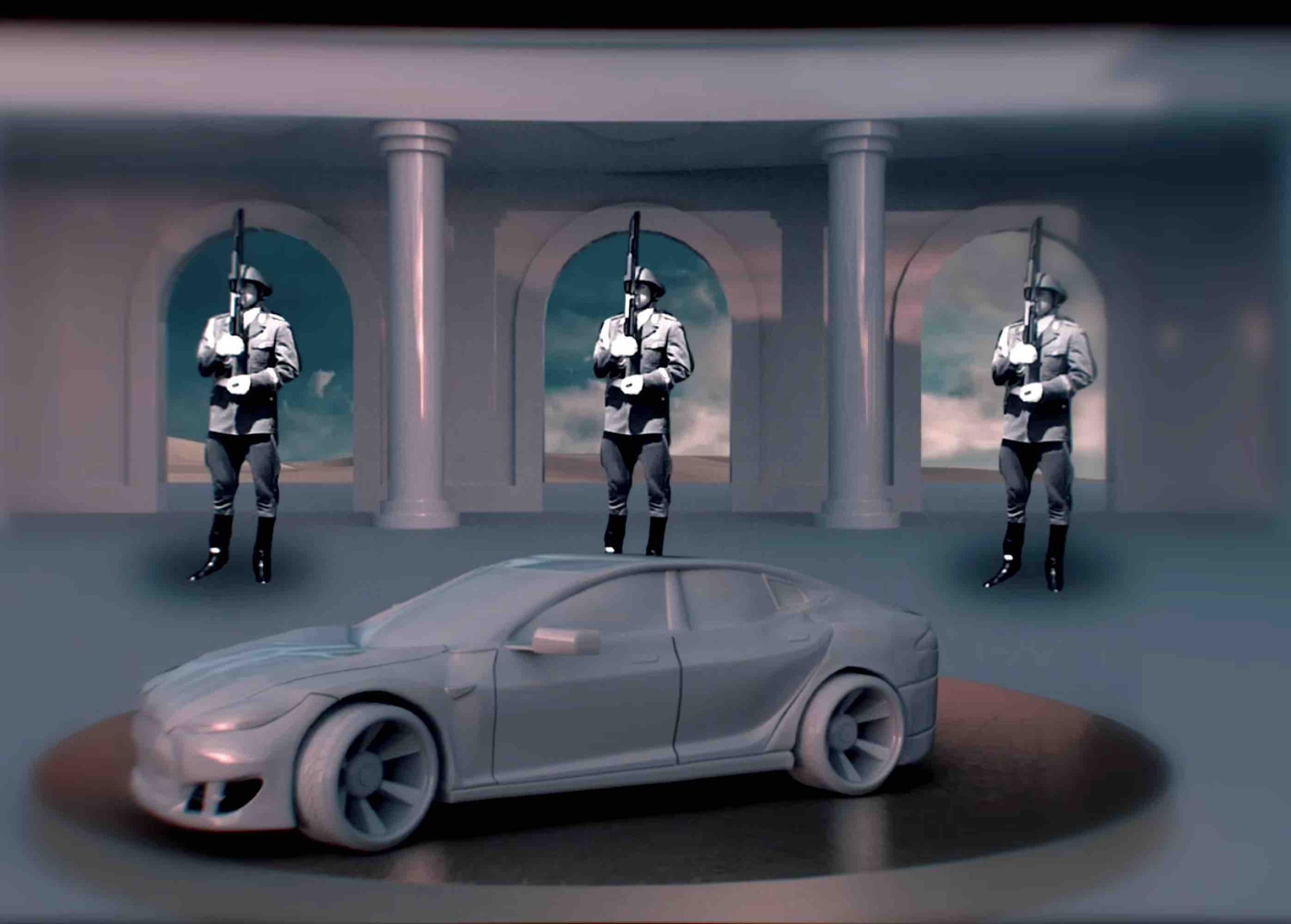
Changing of the Guard (Berlin, DDR) 1972-2021, 1’14”
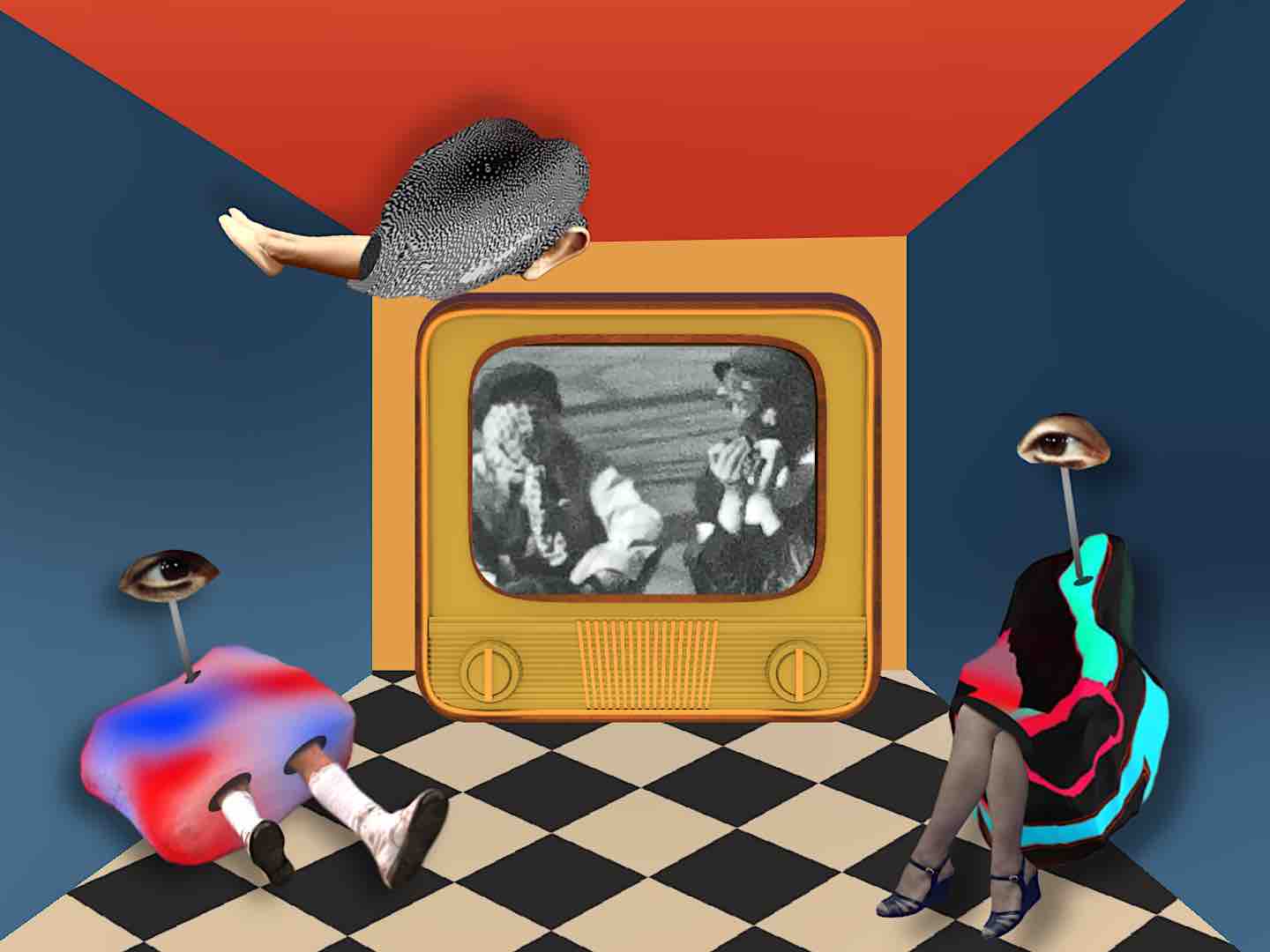
Busó (Mohács, Hungary) 1967-2021, 1’09”
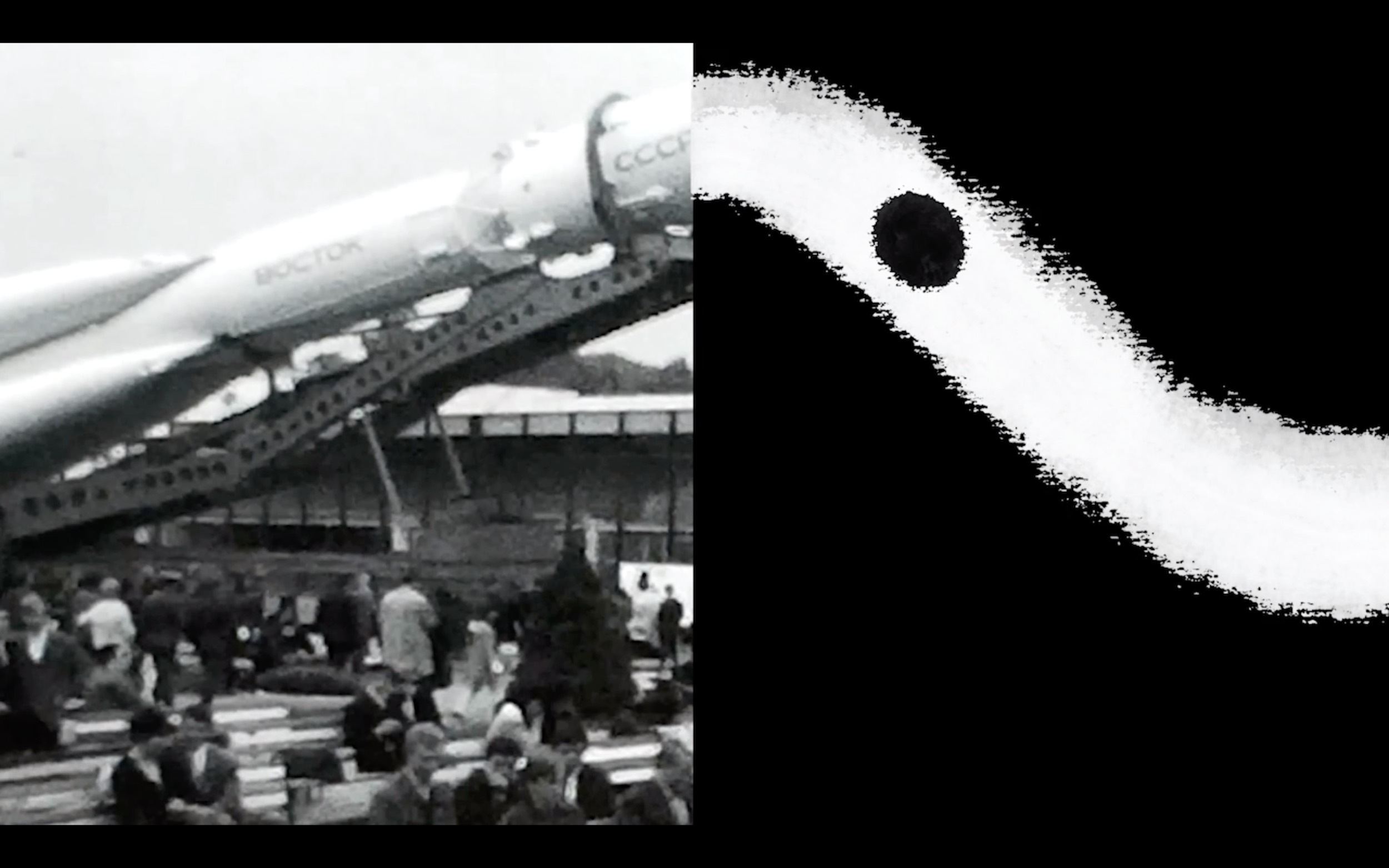
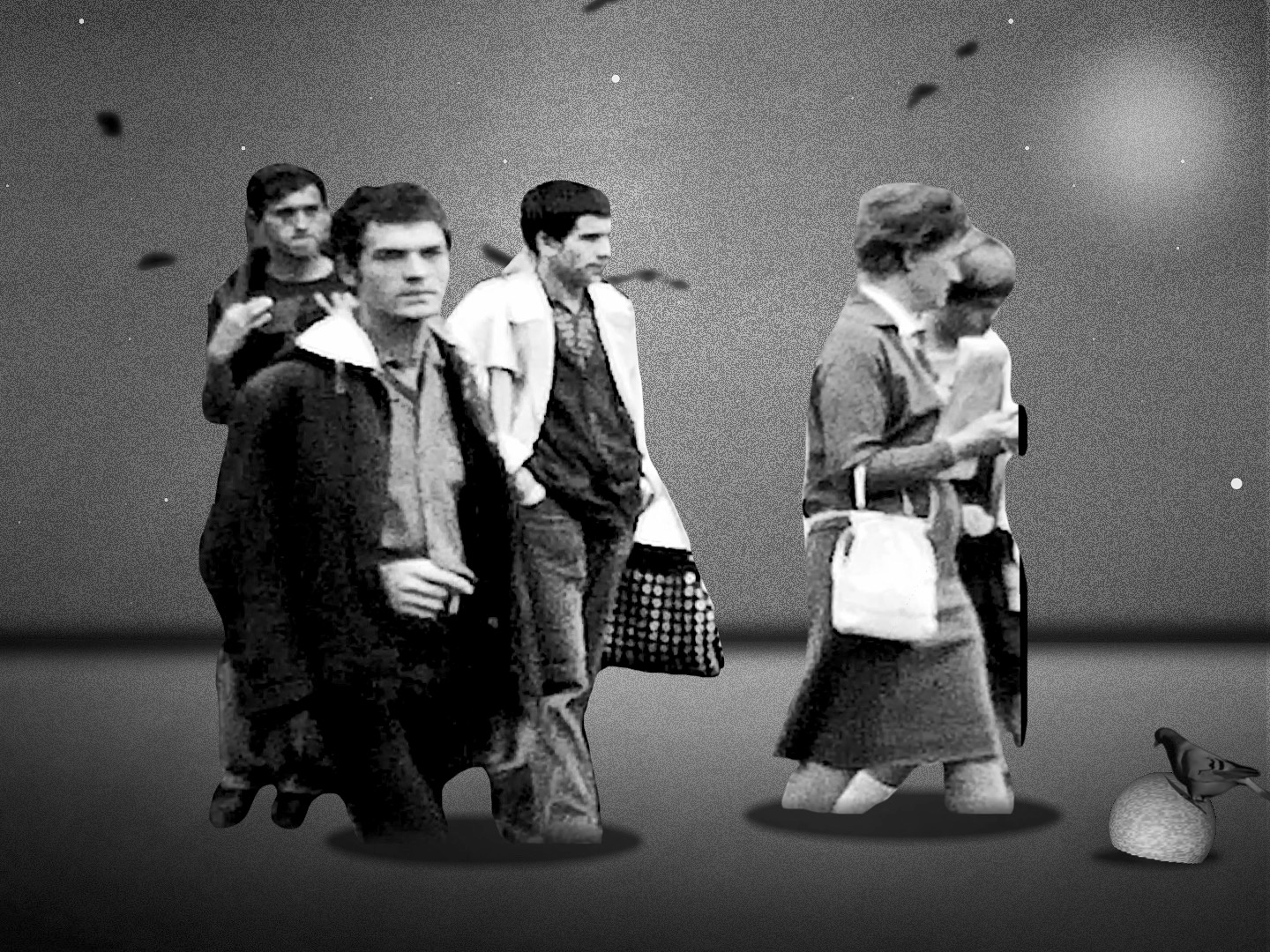
Parallel Dimension (Budapest, Prague, Balaton) 1967-2021, 1’10”
Mariana Vassileva
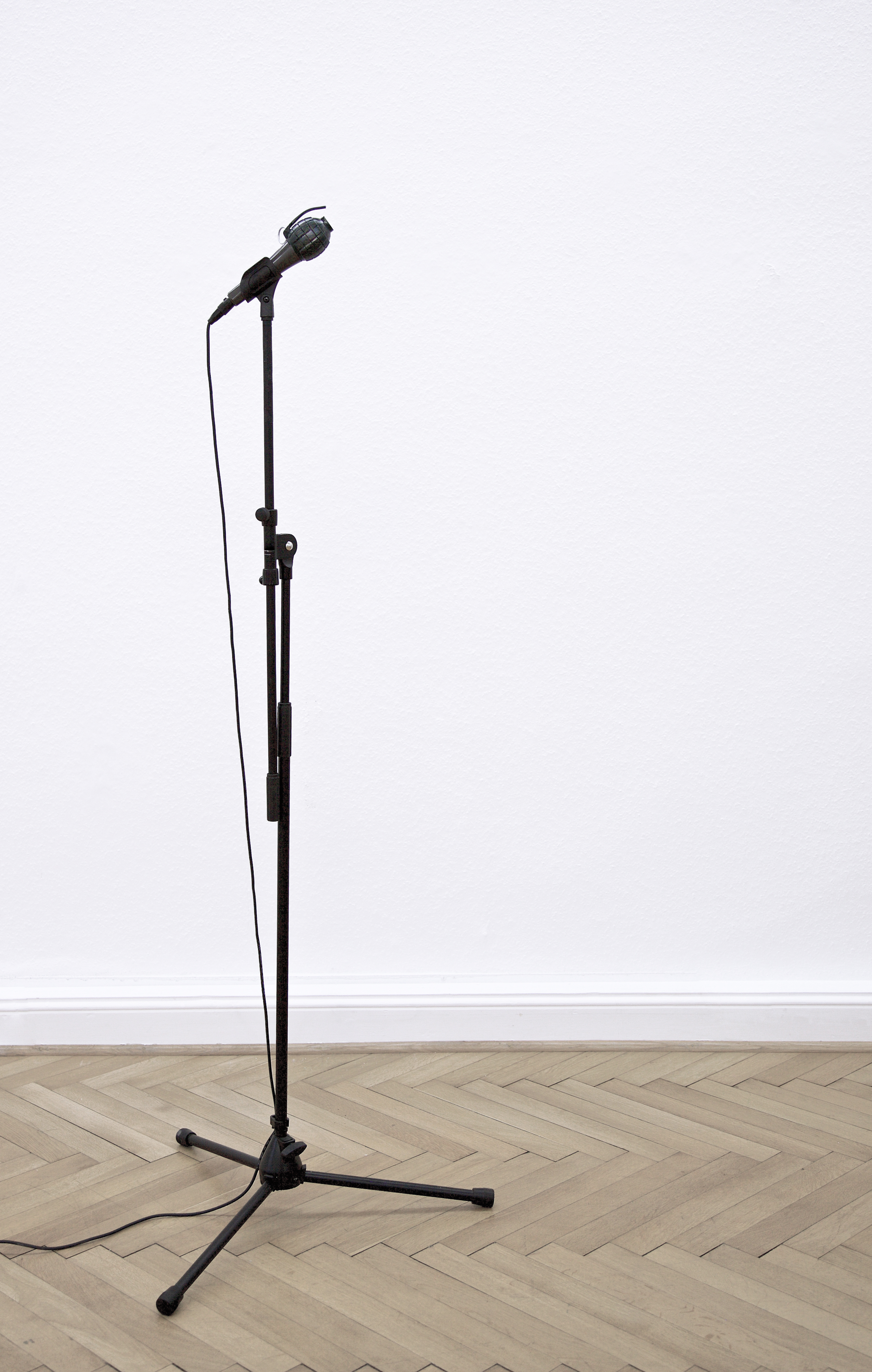
Mariana Vassileva, Microphone (2017) mixed media / (2021) bronze, 150 x 60 x 60 cm
In an era witnessing the steady resurgence of authoritarianism, nationalism and racism the world over, Mariana Vassileva’s iconic work envisions the explosive power of the word through a subtly subverted symbol of power. While many governments still seek to curb freedoms of speech, others perhaps exploit free speech in overabundance. As the line between ‘real’ and ‘fake’ news continues to blur in our over-mediated culture, and information spreading digitally is even more viral than disease, we live in an era where the power of the wrong word has more capacity for destruction than ever before. Vassileva’s Microphone is emblematic of the very necessity for an initiative such as Birds & Bicycles to consider the meanings and repercussions of freedom in our current age.
Microphone was made during the artist’s tenure at the Tarabya Cultural Academy – an Artist Residency for German-Turkish dialogue in Istanbul – and it is shown in this exhibition concurrently with Studio Bosporus in Kunstraum Kreuzberg, the exhibition celebrating the 10-year anniversary of the Tarabya Residency, also taking pace in the Kunstquartier Bethanien.
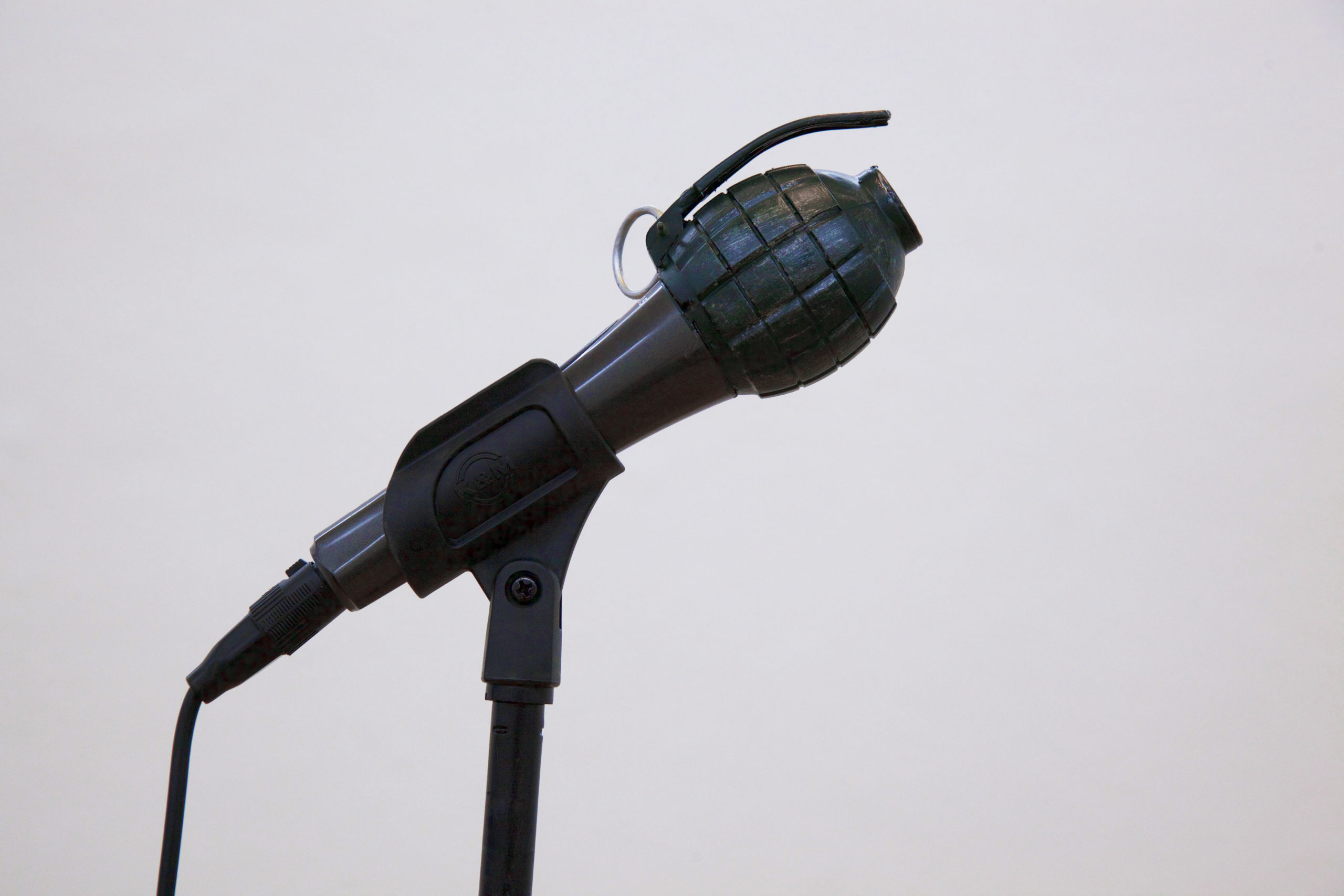
Mariana Vassileva (b. 1964 in Bulgaria. Lives and works in Berlin.)
Mariana Vassileva graduated from the Universität der Künste, Berlin, in 2000, and has remained in Berlin since that time. Working across varied mediums such as video, sculpture, installation, and drawing, Vassileva’s practice is concerned with the poetry that lies beneath the quotidian and the routine. Based upon observation of daily life, her works respond to an element of playfulness inherent in artist and viewer alike. With the curious gaze of a voyeur or of an urban anthropologist, the artist observes people and their surroundings in order to capture a moment of poetic imagery. Watching, and the distance it implies, are both method and subject of a body of work reflecting on human concerns familiar to us all: communication, cultural displacement, relations with self and other, loneliness and the humor hidden within the rhythms of the day-to-day.
Mariana Vassileva is an internationally acclaimed interdisciplinary artist, having shown in major institutions including: Musée d’Art Contemporain de Montréal (Canada); Tate Britain (UK); Centre Pompidou (Paris, France); Museo Nacional Centro de Arte Reina Sofía (Spain); Museum of Fine Arts (Boston, USA); The Israel Museum (Jerusalem); Kunstmuseum Wolfsburg (Wolfsburg, Germany); Weserburg Museum für Moderne Kunst (Germany); Kunsthalle zu Kiel (Germany); Edition Block (Berlin, Germany); The Stenersen Museum (Oslo,Norway); Total Museum (Seoul, Korea); Hong Kong Arts Centre (Hong Kong).
Mariana Vassileva has participated in several international Biennials, including: the 1st Biennal del Fin del Mundo, Ushuaia, Tierra del Fuego, (Argentina, 2007); the 17th Biennale of Sydney, The Beauty and the Distance: Songs of Survival in a Precarious Age, (Australia, 2010); the 4th Moscow Biennale of Contemporary Art, Rewriting Worlds, (Russia, 2011); Biennale Vento Sul in Curitiba, (Brasil, 2012); the 56th October Salon, Belgrade Biennale, The Pleasure of Love, (Serbia, 2016).
Vassileva’s works are held in international public collections, including: Kunstmuseum Wolfsburg (Wolfsburg, Germany); Rene Block Collection (Berlin, Germany); Koc Museum (Istanbul, Turkey); The Israel Museum (Jerusalem, Israel); La Caixa, Caja de Ahorros de El Monte y Fundacion el Monte (Spain); Lemaitre Collection (London-Paris); Kunsthalle Emden (Germany); Lidice Memorial.
Vadim Zakharov
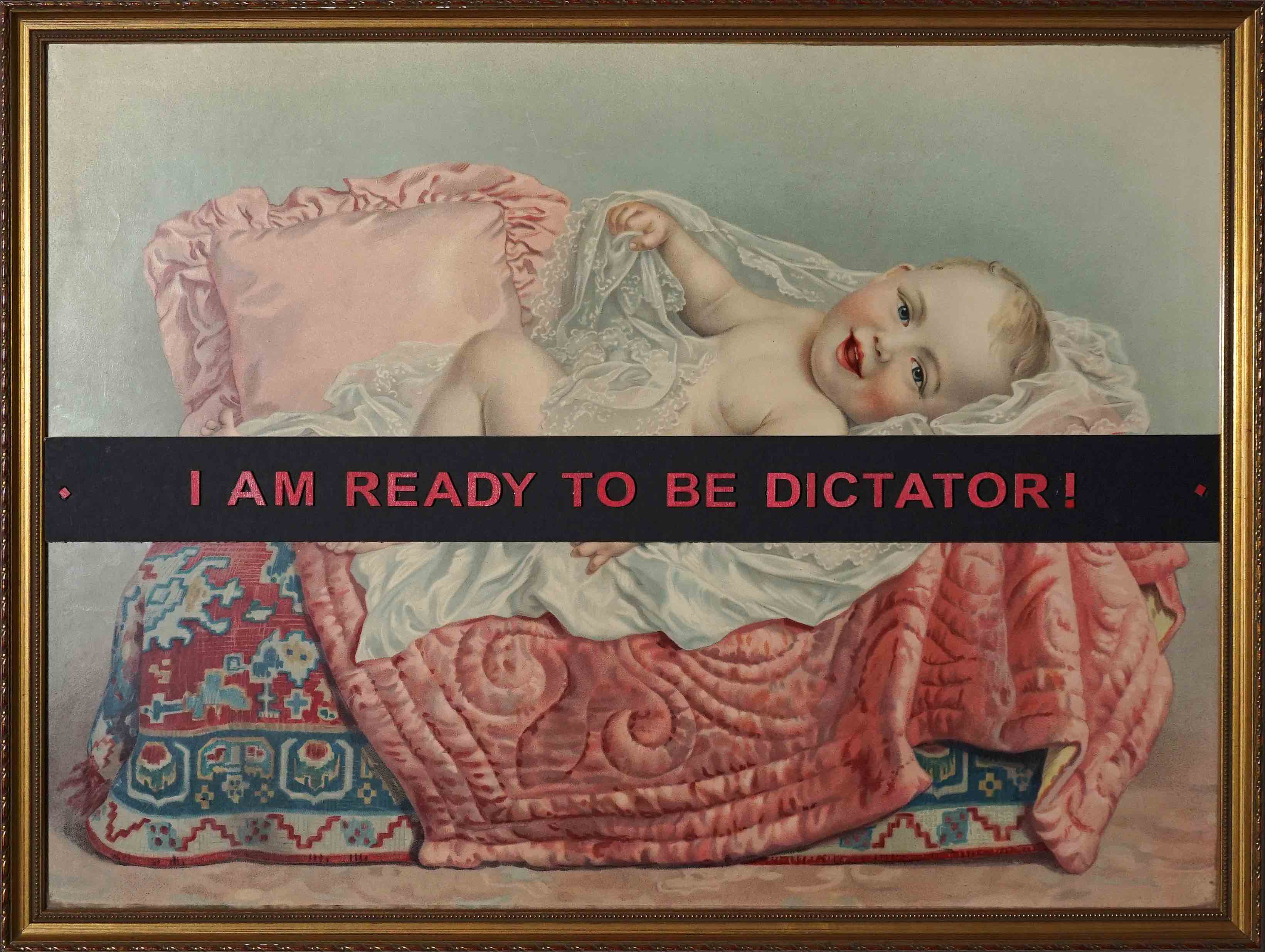
Vadim Zakharov, I Am Ready To Be Dictator! (2021), Mixed Media, 45 x 50 cm
The works selected for this exhibition embody the trajectory of Vadim Zakharov’s conceptual practice – from his first work, made in 1978 at the age of nineteen, to his most recent work, plucked off his studio wall in August 2021. Growing up in the vastness of the Soviet Union, a nation proudly encompassing one-sixth of the earth, Zakharov nevertheless chaffed against his isolation from the rest of the world. Borders were closed, travel was largely impossible, and the exchange of information with the ‘free’ world tightly controlled. In a gesture designed to send his consciousness out into the universe, to communicate somehow with the world outside, the young artist made a print with his thumb on a pocket mirror and angled the reflection towards the sun. Now, over forty years later, living in Berlin, in a free world ostensibly devoid of punitive ideologies, where every child is brought up to believe that they can become whatever they want to be, the specter of oppression nevertheless looms large once more. Is it an overabundance of ‘freedom’ which has caused the resurgence of the far right throughout Europe and many parts of the world? In a Germany perpetually aware that the horrors of history must not repeat themselves, like anywhere else in the world, we can never guess when the next dictator might be born. The installation I Am Ready To Be Dictator! transforms a kitsch painting found by Zakharov in a flea market into a stark warning; a reminder that despite our best efforts, history is always on the verge of repeating itself.
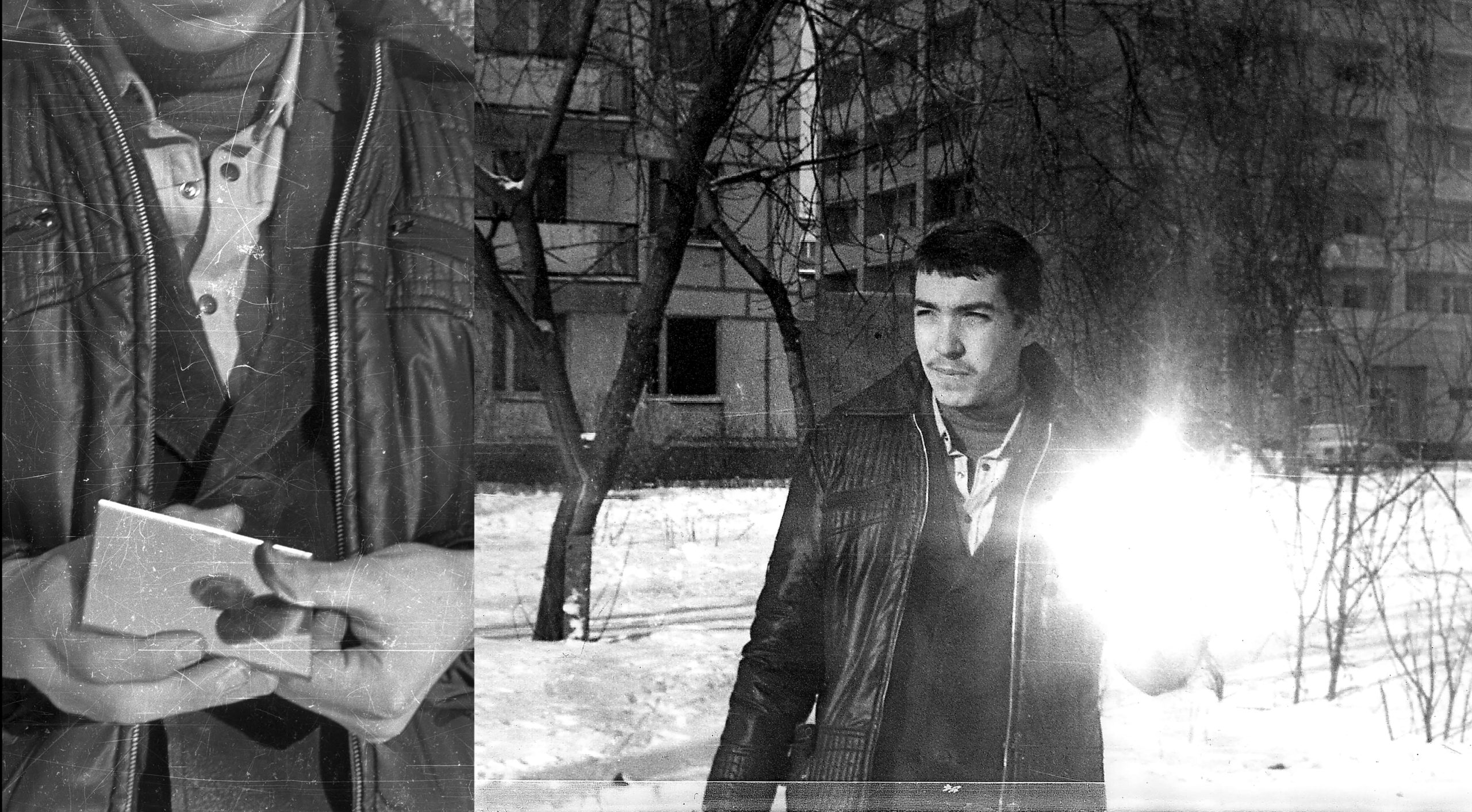
Vadim Zakharov, An Exchange of Information with the Sun (1978), Photograph on Aludibond, 30 x 54 cm
Vadim Zakharov (b. 1959 in Dushanbe, UdSSR (now Tajikistan). Lives and works in Berlin.)
Vadim Zakharov is an artist, editor, archivist of the Moscow Conceptual art scene, and collector. Since 1979 he has participated in exhibitions of unofficial art and collaborated with such artists as: V. Skersis, S. Anufriev, I. Chuikov, A. Monastyrski, Y. Leiderman. In 1982–1983 he participated in the AptArt Gallery, Moscow. Since 1992 till 2001 he has published the “Pastor” magazine and founded the Pastor Zond Edition. In 2006 he edited book “Moscow Conceptualism”. His retrospective was held at the Tretyakov Gallery in 2006. He represented Russia at the Venice Biennale in 2013 with the project “DANAE”. In 2016-2020 Zakharov organized the exhibition space “FREEHOME-Artist to Artist” in Berlin.
Selected honors and awards include: Griffelkunst-Preis, Hamburg (1995); Renta-Preis, Kunsthalle Nürnberg (1995); Soratnik Prize, Moscow (2006); Innovation Prize, Moscow (2006); Joseph Brodsky Memorial Fellowship Fund, American Academy in Rome (2007); Kandinsky Prize – Best Work of Year, Moscow (2009).
In addition to numerous solo and group exhibitions, Vadim Zakharov has participated in many biennales of contemporary art, including: the 49th Venice Biennale, “Plateau of Humankind”, (Director Harald Szeemann, Arsenale, 2001); 1st Thessaloniki Biennale, “Black Birds” installation (Museum of Byzantine Culture, 2007 ); 55th Venice Biennale, Vadim Zakharov, “Danaë”, Russian Pavilion (2013); 5th Moscow Biennale, Vadim Zakharov, “Dead Languages Dance. Fall collection”, (TSUM, 2013); “2014. Space Odyssey”, CAFAM BIENNALE, Beijing (2014); 3rd Biennale of Bahia, Museum of Modern Art of Bahia (2014); 14 Krasnoyarsk Museum Biennale, Russia (2021).
Vadim Zakharov’s works are held in many prestigious public collections, including: Guggenheim Museum, New York, USA; TATE Modern, London, UK; Modern Art Museum, Frankfurt, DE; Deutsche Bank Collection, Frankfurt am Main, DE; Kupferstienkabinet, Berlin, DE; Ludwig Museum, Aachen, Budapest; Saint Petersburg, RU; Zimmerli Art Museum, Rutgers USA; Museum of Art at Duke University, USA; Museum of Fine Arts, Budapest, HU; Strasbourg Museum of Modern and Contemporary Art, DE; Tretyakov Gallery, Moscow, RU; Russian Museum, Saint Petersburg, RU; Museum of Modern Art, Moscow, RU; Moscow Collections of the NCCA, Moscow, RU
THE PARTNERS:
ACM (Association of Cultural Managers), Moscow – a large non-profit organization that supports research (including European) programs in the field of museum practices, social initiatives, and the development of public areas based on social, communication, and cultural technologies. (In 2020 – 2021, their curator Georgy Nikich was the research advisor of the analytical review “Volunteer — Museum — Society: Practice and Prospects” (http://museum-volunteer-society.ru/summary)
The Big Museum, Moscow – project organization that develops multimedia platforms.
The Polytechnic Museum, Moscow – provides expertise on the history and technology of bicycling.
The BWA Krosno Gallery, Poland – collaborates with a large number of environmental centers of expertise.
Miras Gallery, Ufa, Republic of Bashkortostan, Russia – works with expert organizations in the field of migration and inter-ethnic relations.
Moscow Museum – there are many expert groups and activists united around Moscow Museum – raise and solve urban and environmental issues, as well as bicycle activists – the Red Pump community will participate in our project’s events (http://www.redpump.ru/).
MSSES, Moscow School of Economic and Social Studies – one of the bases of scientific support for the project, especially in the fields of sociology, urban studies, social and cultural projects (https://www.msses.ru/).
Vykhod Center, Petrozavodsk, Russia – has substantial experience in cooperating with social and cultural organizations in developing of creative tourism and supporting the idea of a common identity between the Finnish and Russian parts of Karelia.
MOMENTUM, Berlin – the platform for Time-Based Art, acting as a bridge between international art communities, hosts a 2-month exhibition in their gallery space in the Kunstquartier Bethanien in Kreuzberg, and online on their channel on IkonoTV, accompanied by a symposium.
 |
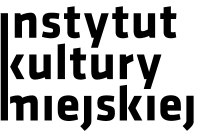 |
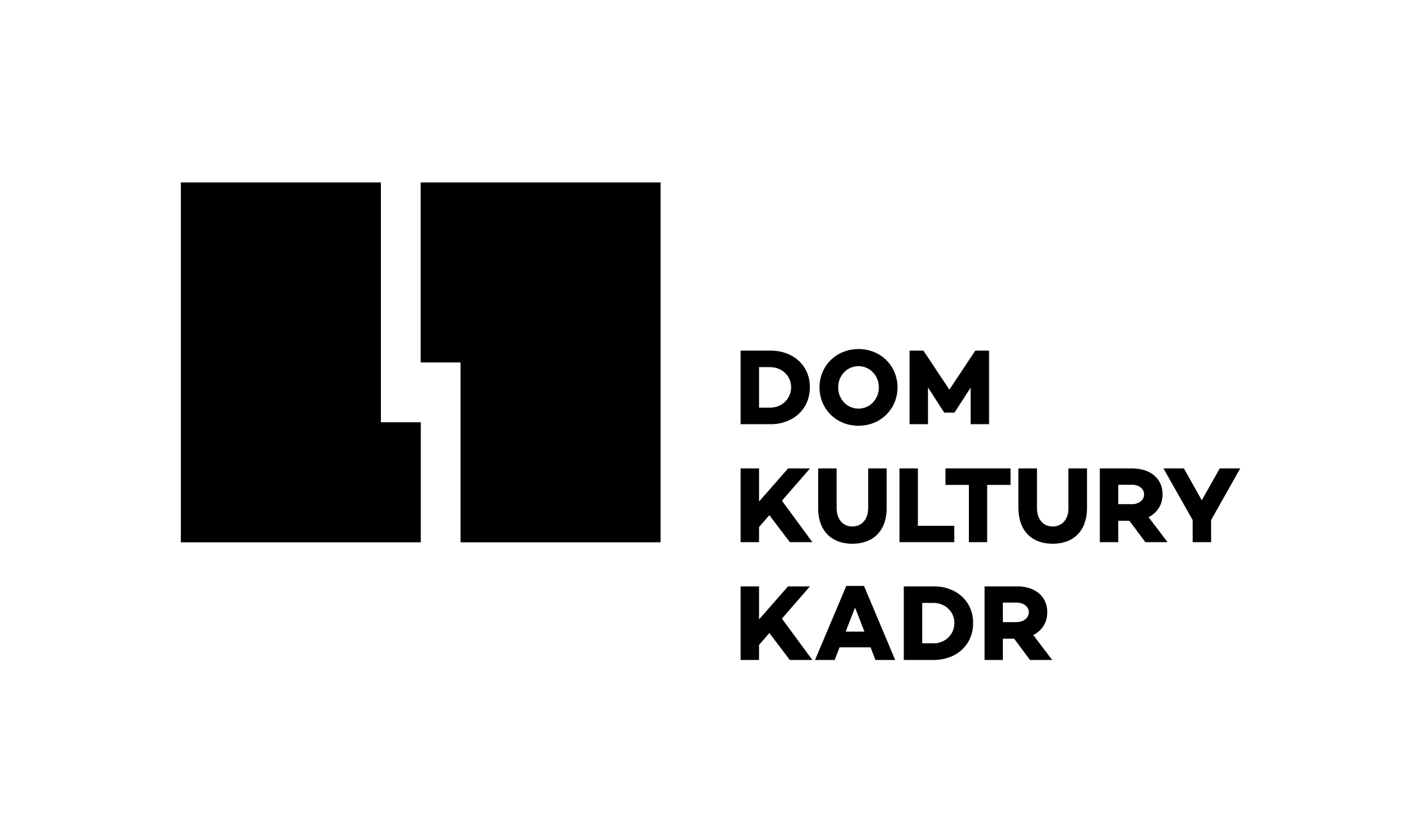 |
 |
WITH THANKS TO:
 |
 |
 |
 |


 Back to Homepage
Back to Homepage

